- Affiliate Program

- UNITED STATES
- 台灣 (TAIWAN)
- TÜRKIYE (TURKEY)
- Academic Editing Services
- - Research Paper
- - Journal Manuscript
- - Dissertation
- - College & University Assignments
- Admissions Editing Services
- - Application Essay
- - Personal Statement
- - Recommendation Letter
- - Cover Letter
- - CV/Resume
- Business Editing Services
- - Business Documents
- - Report & Brochure
- - Website & Blog
- Writer Editing Services
- - Script & Screenplay
- Our Editors
- Client Reviews
- Editing & Proofreading Prices
- Wordvice Points
- Partner Discount
- Plagiarism Checker
- APA Citation Generator
- MLA Citation Generator
- Chicago Citation Generator
- Vancouver Citation Generator
- - APA Style
- - MLA Style
- - Chicago Style
- - Vancouver Style
- Writing & Editing Guide
- Academic Resources
- Admissions Resources

How to Write the Rationale of the Study in Research (Examples)
What is the Rationale of the Study?
The rationale of the study is the justification for taking on a given study. It explains the reason the study was conducted or should be conducted. This means the study rationale should explain to the reader or examiner why the study is/was necessary. It is also sometimes called the “purpose” or “justification” of a study. While this is not difficult to grasp in itself, you might wonder how the rationale of the study is different from your research question or from the statement of the problem of your study, and how it fits into the rest of your thesis or research paper.
The rationale of the study links the background of the study to your specific research question and justifies the need for the latter on the basis of the former. In brief, you first provide and discuss existing data on the topic, and then you tell the reader, based on the background evidence you just presented, where you identified gaps or issues and why you think it is important to address those. The problem statement, lastly, is the formulation of the specific research question you choose to investigate, following logically from your rationale, and the approach you are planning to use to do that.
Table of Contents:
How to write a rationale for a research paper , how do you justify the need for a research study.
- Study Rationale Example: Where Does It Go In Your Paper?
The basis for writing a research rationale is preliminary data or a clear description of an observation. If you are doing basic/theoretical research, then a literature review will help you identify gaps in current knowledge. In applied/practical research, you base your rationale on an existing issue with a certain process (e.g., vaccine proof registration) or practice (e.g., patient treatment) that is well documented and needs to be addressed. By presenting the reader with earlier evidence or observations, you can (and have to) convince them that you are not just repeating what other people have already done or said and that your ideas are not coming out of thin air.
Once you have explained where you are coming from, you should justify the need for doing additional research–this is essentially the rationale of your study. Finally, when you have convinced the reader of the purpose of your work, you can end your introduction section with the statement of the problem of your research that contains clear aims and objectives and also briefly describes (and justifies) your methodological approach.
When is the Rationale for Research Written?
The author can present the study rationale both before and after the research is conducted.
- Before conducting research : The study rationale is a central component of the research proposal . It represents the plan of your work, constructed before the study is actually executed.
- Once research has been conducted : After the study is completed, the rationale is presented in a research article or PhD dissertation to explain why you focused on this specific research question. When writing the study rationale for this purpose, the author should link the rationale of the research to the aims and outcomes of the study.
What to Include in the Study Rationale
Although every study rationale is different and discusses different specific elements of a study’s method or approach, there are some elements that should be included to write a good rationale. Make sure to touch on the following:
- A summary of conclusions from your review of the relevant literature
- What is currently unknown (gaps in knowledge)
- Inconclusive or contested results from previous studies on the same or similar topic
- The necessity to improve or build on previous research, such as to improve methodology or utilize newer techniques and/or technologies
There are different types of limitations that you can use to justify the need for your study. In applied/practical research, the justification for investigating something is always that an existing process/practice has a problem or is not satisfactory. Let’s say, for example, that people in a certain country/city/community commonly complain about hospital care on weekends (not enough staff, not enough attention, no decisions being made), but you looked into it and realized that nobody ever investigated whether these perceived problems are actually based on objective shortages/non-availabilities of care or whether the lower numbers of patients who are treated during weekends are commensurate with the provided services.
In this case, “lack of data” is your justification for digging deeper into the problem. Or, if it is obvious that there is a shortage of staff and provided services on weekends, you could decide to investigate which of the usual procedures are skipped during weekends as a result and what the negative consequences are.
In basic/theoretical research, lack of knowledge is of course a common and accepted justification for additional research—but make sure that it is not your only motivation. “Nobody has ever done this” is only a convincing reason for a study if you explain to the reader why you think we should know more about this specific phenomenon. If there is earlier research but you think it has limitations, then those can usually be classified into “methodological”, “contextual”, and “conceptual” limitations. To identify such limitations, you can ask specific questions and let those questions guide you when you explain to the reader why your study was necessary:
Methodological limitations
- Did earlier studies try but failed to measure/identify a specific phenomenon?
- Was earlier research based on incorrect conceptualizations of variables?
- Were earlier studies based on questionable operationalizations of key concepts?
- Did earlier studies use questionable or inappropriate research designs?
Contextual limitations
- Have recent changes in the studied problem made previous studies irrelevant?
- Are you studying a new/particular context that previous findings do not apply to?
Conceptual limitations
- Do previous findings only make sense within a specific framework or ideology?
Study Rationale Examples
Let’s look at an example from one of our earlier articles on the statement of the problem to clarify how your rationale fits into your introduction section. This is a very short introduction for a practical research study on the challenges of online learning. Your introduction might be much longer (especially the context/background section), and this example does not contain any sources (which you will have to provide for all claims you make and all earlier studies you cite)—but please pay attention to how the background presentation , rationale, and problem statement blend into each other in a logical way so that the reader can follow and has no reason to question your motivation or the foundation of your research.
Background presentation
Since the beginning of the Covid pandemic, most educational institutions around the world have transitioned to a fully online study model, at least during peak times of infections and social distancing measures. This transition has not been easy and even two years into the pandemic, problems with online teaching and studying persist (reference needed) .
While the increasing gap between those with access to technology and equipment and those without access has been determined to be one of the main challenges (reference needed) , others claim that online learning offers more opportunities for many students by breaking down barriers of location and distance (reference needed) .
Rationale of the study
Since teachers and students cannot wait for circumstances to go back to normal, the measures that schools and universities have implemented during the last two years, their advantages and disadvantages, and the impact of those measures on students’ progress, satisfaction, and well-being need to be understood so that improvements can be made and demographics that have been left behind can receive the support they need as soon as possible.
Statement of the problem
To identify what changes in the learning environment were considered the most challenging and how those changes relate to a variety of student outcome measures, we conducted surveys and interviews among teachers and students at ten institutions of higher education in four different major cities, two in the US (New York and Chicago), one in South Korea (Seoul), and one in the UK (London). Responses were analyzed with a focus on different student demographics and how they might have been affected differently by the current situation.
How long is a study rationale?
In a research article bound for journal publication, your rationale should not be longer than a few sentences (no longer than one brief paragraph). A dissertation or thesis usually allows for a longer description; depending on the length and nature of your document, this could be up to a couple of paragraphs in length. A completely novel or unconventional approach might warrant a longer and more detailed justification than an approach that slightly deviates from well-established methods and approaches.
Consider Using Professional Academic Editing Services
Now that you know how to write the rationale of the study for a research proposal or paper, you should make use of Wordvice AI’s free AI Grammar Checker , or receive professional academic proofreading services from Wordvice, including research paper editing services and manuscript editing services to polish your submitted research documents.
You can also find many more articles, for example on writing the other parts of your research paper , on choosing a title , or on making sure you understand and adhere to the author instructions before you submit to a journal, on the Wordvice academic resources pages.
How to Write the Rationale for a Research Paper
- Research Process
- Peer Review
A research rationale answers the big SO WHAT? that every adviser, peer reviewer, and editor has in mind when they critique your work. A compelling research rationale increases the chances of your paper being published or your grant proposal being funded. In this article, we look at the purpose of a research rationale, its components and key characteristics, and how to create an effective research rationale.
Updated on September 19, 2022

The rationale for your research is the reason why you decided to conduct the study in the first place. The motivation for asking the question. The knowledge gap. This is often the most significant part of your publication. It justifies the study's purpose, novelty, and significance for science or society. It's a critical part of standard research articles as well as funding proposals.
Essentially, the research rationale answers the big SO WHAT? that every (good) adviser, peer reviewer, and editor has in mind when they critique your work.
A compelling research rationale increases the chances of your paper being published or your grant proposal being funded. In this article, we look at:
- the purpose of a research rationale
- its components and key characteristics
- how to create an effective research rationale
What is a research rationale?
Think of a research rationale as a set of reasons that explain why a study is necessary and important based on its background. It's also known as the justification of the study, rationale, or thesis statement.
Essentially, you want to convince your reader that you're not reciting what other people have already said and that your opinion hasn't appeared out of thin air. You've done the background reading and identified a knowledge gap that this rationale now explains.
A research rationale is usually written toward the end of the introduction. You'll see this section clearly in high-impact-factor international journals like Nature and Science. At the end of the introduction there's always a phrase that begins with something like, "here we show..." or "in this paper we show..." This text is part of a logical sequence of information, typically (but not necessarily) provided in this order:

Here's an example from a study by Cataldo et al. (2021) on the impact of social media on teenagers' lives.

Note how the research background, gap, rationale, and objectives logically blend into each other.
The authors chose to put the research aims before the rationale. This is not a problem though. They still achieve a logical sequence. This helps the reader follow their thinking and convinces them about their research's foundation.
Elements of a research rationale
We saw that the research rationale follows logically from the research background and literature review/observation and leads into your study's aims and objectives.
This might sound somewhat abstract. A helpful way to formulate a research rationale is to answer the question, “Why is this study necessary and important?”
Generally, that something has never been done before should not be your only motivation. Use it only If you can give the reader valid evidence why we should learn more about this specific phenomenon.
A well-written introduction covers three key elements:
- What's the background to the research?
- What has been done before (information relevant to this particular study, but NOT a literature review)?
- Research rationale
Now, let's see how you might answer the question.
1. This study complements scientific knowledge and understanding
Discuss the shortcomings of previous studies and explain how'll correct them. Your short review can identify:
- Methodological limitations . The methodology (research design, research approach or sampling) employed in previous works is somewhat flawed.
Example : Here , the authors claim that previous studies have failed to explore the role of apathy “as a predictor of functional decline in healthy older adults” (Burhan et al., 2021). At the same time, we know a lot about other age-related neuropsychiatric disorders, like depression.
Their study is necessary, then, “to increase our understanding of the cognitive, clinical, and neural correlates of apathy and deconstruct its underlying mechanisms.” (Burhan et al., 2021).
- Contextual limitations . External factors have changed and this has minimized or removed the relevance of previous research.
Example : You want to do an empirical study to evaluate the effects of the COVID-19 pandemic on the number of tourists visiting Sicily. Previous studies might have measured tourism determinants in Sicily, but they preceded COVID-19.
- Conceptual limitations . Previous studies are too bound to a specific ideology or a theoretical framework.
Example : The work of English novelist E. M. Forster has been extensively researched for its social, political, and aesthetic dimensions. After the 1990s, younger scholars wanted to read his novels as an example of gay fiction. They justified the need to do so based on previous studies' reliance on homophobic ideology.
This kind of rationale is most common in basic/theoretical research.
2. This study can help solve a specific problem
Here, you base your rationale on a process that has a problem or is not satisfactory.
For example, patients complain about low-quality hospital care on weekends (staff shortages, inadequate attention, etc.). No one has looked into this (there is a lack of data). So, you explore if the reported problems are true and what can be done to address them. This is a knowledge gap.
Or you set out to explore a specific practice. You might want to study the pros and cons of several entry strategies into the Japanese food market.
It's vital to explain the problem in detail and stress the practical benefits of its solution. In the first example, the practical implications are recommendations to improve healthcare provision.
In the second example, the impact of your research is to inform the decision-making of businesses wanting to enter the Japanese food market.
This kind of rationale is more common in applied/practical research.
3. You're the best person to conduct this study
It's a bonus if you can show that you're uniquely positioned to deliver this study, especially if you're writing a funding proposal .
For an anthropologist wanting to explore gender norms in Ethiopia, this could be that they speak Amharic (Ethiopia's official language) and have already lived in the country for a few years (ethnographic experience).
Or if you want to conduct an interdisciplinary research project, consider partnering up with collaborators whose expertise complements your own. Scientists from different fields might bring different skills and a fresh perspective or have access to the latest tech and equipment. Teaming up with reputable collaborators justifies the need for a study by increasing its credibility and likely impact.
When is the research rationale written?
You can write your research rationale before, or after, conducting the study.
In the first case, when you might have a new research idea, and you're applying for funding to implement it.
Or you're preparing a call for papers for a journal special issue or a conference. Here , for instance, the authors seek to collect studies on the impact of apathy on age-related neuropsychiatric disorders.
In the second case, you have completed the study and are writing a research paper for publication. Looking back, you explain why you did the study in question and how it worked out.
Although the research rationale is part of the introduction, it's best to write it at the end. Stand back from your study and look at it in the big picture. At this point, it's easier to convince your reader why your study was both necessary and important.
How long should a research rationale be?
The length of the research rationale is not fixed. Ideally, this will be determined by the guidelines (of your journal, sponsor etc.).
The prestigious journal Nature , for instance, calls for articles to be no more than 6 or 8 pages, depending on the content. The introduction should be around 200 words, and, as mentioned, two to three sentences serve as a brief account of the background and rationale of the study, and come at the end of the introduction.
If you're not provided guidelines, consider these factors:
- Research document : In a thesis or book-length study, the research rationale will be longer than in a journal article. For example, the background and rationale of this book exploring the collective memory of World War I cover more than ten pages.
- Research question : Research into a new sub-field may call for a longer or more detailed justification than a study that plugs a gap in literature.
Which verb tenses to use in the research rationale?
It's best to use the present tense. Though in a research proposal, the research rationale is likely written in the future tense, as you're describing the intended or expected outcomes of the research project (the gaps it will fill, the problems it will solve).
Example of a research rationale
Research question : What are the teachers' perceptions of how a sense of European identity is developed and what underlies such perceptions?

Braun, V., & Clarke, V. (2006). Using thematic analysis in psychology. Qualitative Research in Psychology , 3(2), 77-101.
Burhan, A.M., Yang, J., & Inagawa, T. (2021). Impact of apathy on aging and age-related neuropsychiatric disorders. Research Topic. Frontiers in Psychiatry
Cataldo, I., Lepri, B., Neoh, M. J. Y., & Esposito, G. (2021). Social media usage and development of psychiatric disorders in childhood and adolescence: A review. Frontiers in Psychiatry , 11.
CiCe Jean Monnet Network (2017). Guidelines for citizenship education in school: Identities and European citizenship children's identity and citizenship in Europe.
Cohen, l, Manion, L., & Morrison, K. (2018). Research methods in education . Eighth edition. London: Routledge.
de Prat, R. C. (2013). Euroscepticism, Europhobia and Eurocriticism: The radical parties of the right and left “vis-à-vis” the European Union P.I.E-Peter Lang S.A., Éditions Scientifiques Internationales.
European Commission. (2017). Eurydice Brief: Citizenship education at school in Europe.
Polyakova, A., & Fligstein, N. (2016). Is European integration causing Europe to become more nationalist? Evidence from the 2007–9 financial crisis. Journal of European Public Policy , 23(1), 60-83.
Winter, J. (2014). Sites of Memory, Sites of Mourning: The Great War in European Cultural History . Cambridge: Cambridge University Press.

The AJE Team
See our "Privacy Policy"
Ensure your structure and ideas are consistent and clearly communicated
Pair your Premium Editing with our add-on service Presubmission Review for an overall assessment of your manuscript.

Community Blog
Keep up-to-date on postgraduate related issues with our quick reads written by students, postdocs, professors and industry leaders.
How do you Write the Rationale for Research?
- By DiscoverPhDs
- October 21, 2020

What is the Rationale of Research?
The term rationale of research means the reason for performing the research study in question. In writing your rational you should able to convey why there was a need for your study to be carried out. It’s an important part of your research paper that should explain how your research was novel and explain why it was significant; this helps the reader understand why your research question needed to be addressed in your research paper, term paper or other research report.
The rationale for research is also sometimes referred to as the justification for the study. When writing your rational, first begin by introducing and explaining what other researchers have published on within your research field.
Having explained the work of previous literature and prior research, include discussion about where the gaps in knowledge are in your field. Use these to define potential research questions that need answering and explain the importance of addressing these unanswered questions.
The rationale conveys to the reader of your publication exactly why your research topic was needed and why it was significant . Having defined your research rationale, you would then go on to define your hypothesis and your research objectives.
Final Comments
Defining the rationale research, is a key part of the research process and academic writing in any research project. You use this in your research paper to firstly explain the research problem within your dissertation topic. This gives you the research justification you need to define your research question and what the expected outcomes may be.

Do you need to have published papers to do a PhD? The simple answer is no but it could benefit your application if you can.

Learn about defining your workspace, having a list of daily tasks and using technology to stay connected, all whilst working from home as a research student.

How should you spend your first week as a PhD student? Here’s are 7 steps to help you get started on your journey.
Join thousands of other students and stay up to date with the latest PhD programmes, funding opportunities and advice.

Browse PhDs Now

Tenure is a permanent position awarded to professors showing excellence in research and teaching. Find out more about the competitive position!

This article will answer common questions about the PhD synopsis, give guidance on how to write one, and provide my thoughts on samples.

Dr Anwar gained her PhD in Biochemistry from the University of Helsinki in 2019. She is now pursuing a career within industry and becoming more active in science outreach.

Dr Smethurst gained her DPhil in astrophysics from the University of Oxford in 2017. She is now an independent researcher at Oxford, runs a YouTube channel with over 100k subscribers and has published her own book.
Join Thousands of Students

Setting Rationale in Research: Cracking the code for excelling at research
Knowledge and curiosity lays the foundation of scientific progress. The quest for knowledge has always been a timeless endeavor. Scholars seek reasons to explain the phenomena they observe, paving way for development of research. Every investigation should offer clarity and a well-defined rationale in research is a cornerstone upon which the entire study can be built.
Research rationale is the heartbeat of every academic pursuit as it guides the researchers to unlock the untouched areas of their field. Additionally, it illuminates the gaps in the existing knowledge, and identifies the potential contributions that the study aims to make.
Table of Contents
What Is Research Rationale and When Is It Written
Research rationale is the “why” behind every academic research. It not only frames the study but also outlines its objectives , questions, and expected outcomes. Additionally, it helps to identify the potential limitations of the study . It serves as a lighthouse for researchers that guides through data collection and analysis, ensuring their efforts remain focused and purposeful. Typically, a rationale is written at the beginning of the research proposal or research paper . It is an essential component of the introduction section and provides the foundation for the entire study. Furthermore, it provides a clear understanding of the purpose and significance of the research to the readers before delving into the specific details of the study. In some cases, the rationale is written before the methodology, data analysis, and other sections. Also, it serves as the justification for the research, and how it contributes to the field. Defining a research rationale can help a researcher in following ways:
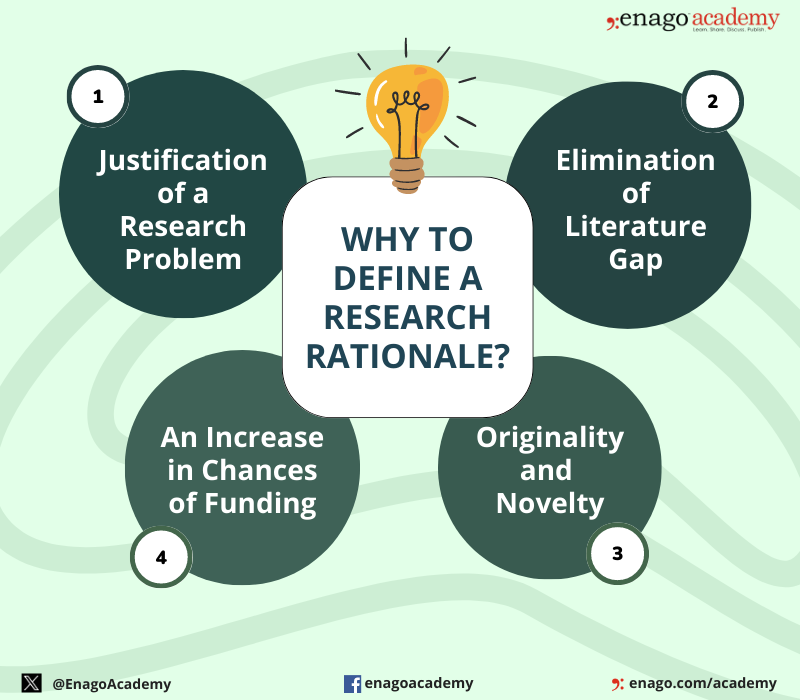
1. Justification of a Research Problem
- Research rationale helps to understand the essence of a research problem.
- It designs the right approach to solve a problem. This aspect is particularly important for applied research, where the outcomes can have real-world relevance and impact.
- Also, it explains why the study is worth conducting and why resources should be allocated to pursue it.
- Additionally, it guides a researcher to highlight the benefits and implications of a strategy.
2. Elimination of Literature Gap
- Research rationale helps to ideate new topics which are less addressed.
- Additionally, it offers fresh perspectives on existing research and discusses the shortcomings in previous studies.
- It shows that your study aims to contribute to filling these gaps and advancing the field’s understanding.
3. Originality and Novelty
- The rationale highlights the unique aspects of your research and how it differs from previous studies.
- Furthermore, it explains why your research adds something new to the field and how it expands upon existing knowledge.
- It highlights how your findings might contribute to a better understanding of a particular issue or problem and potentially lead to positive changes.
- Besides these benefits, it provides a personal motivation to the researchers. In some cases, researchers might have personal experiences or interests that drive their desire to investigate a particular topic.
4. An Increase in Chances of Funding
- It is essential to convince funding agencies , supervisors, or reviewers, that a research is worth pursuing.
- Therefore, a good rationale can get your research approved for funding and increases your chances of getting published in journals; as it addresses the potential knowledge gap in existing research.
Overall, research rationale is essential for providing a clear and convincing argument for the value and importance of your research study, setting the stage for the rest of the research proposal or manuscript. Furthermore, it helps establish the context for your work and enables others to understand the purpose and potential impact of your research.
5 Key Elements of a Research Rationale
Research rationale must include certain components which make it more impactful. Here are the key elements of a research rationale:
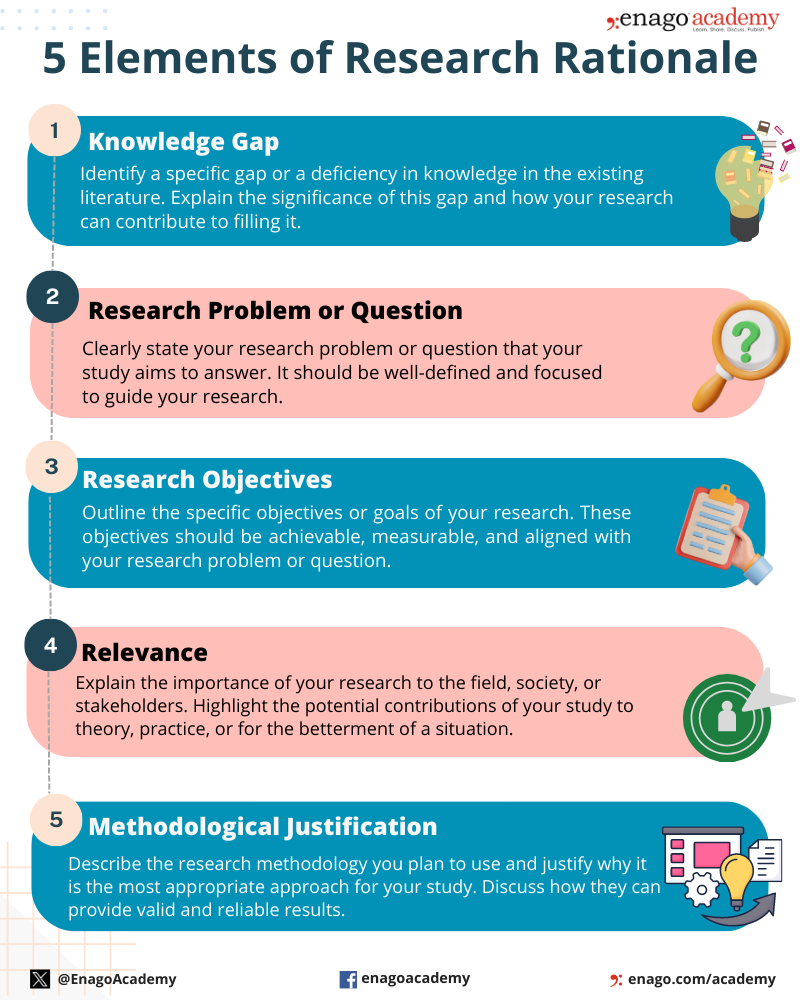
By incorporating these elements, you provide a strong and convincing case for the legitimacy of your research, which is essential for gaining support and approval from academic institutions, funding agencies, or other stakeholders.
How to Write a Rationale in Research
Writing a rationale requires careful consideration of the reasons for conducting the study. It is usually written in the present tense.
Here are some steps to guide you through the process of writing a research rationale:
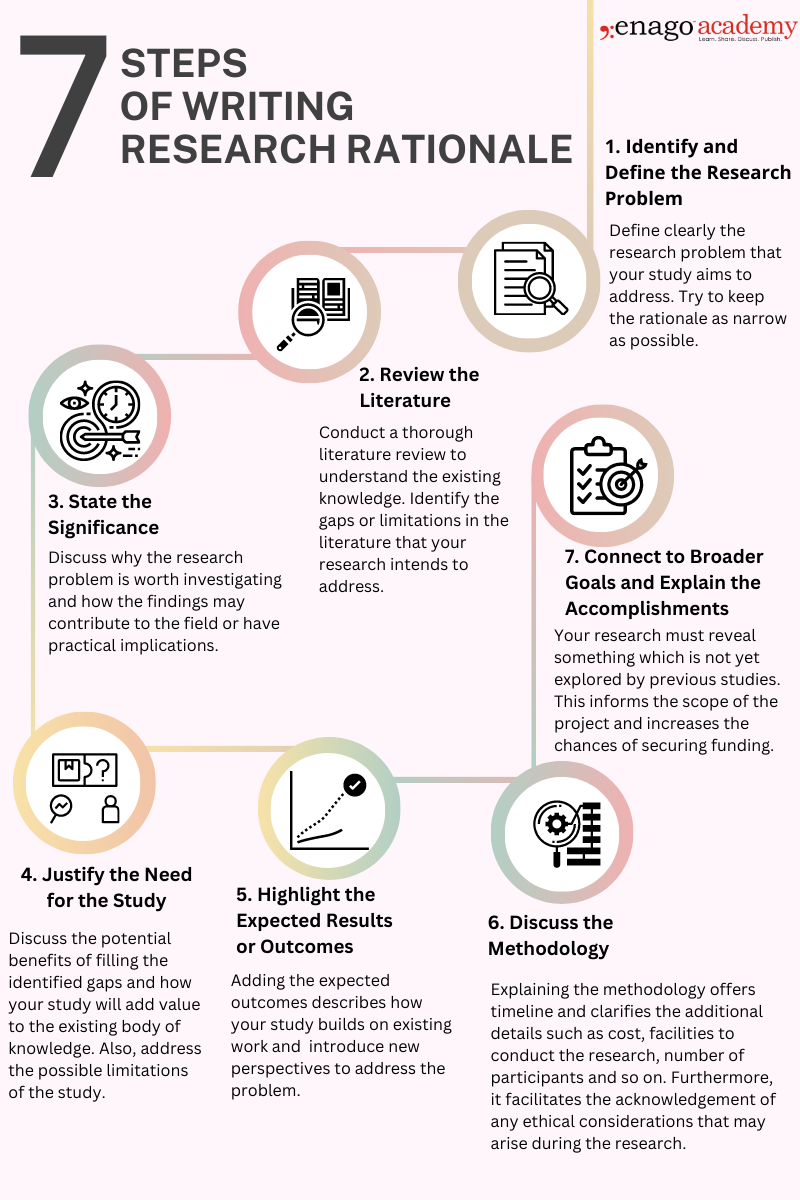
After writing the initial draft, it is essential to review and revise the research rationale to ensure that it effectively communicates the purpose of your research. The research rationale should be persuasive and compelling, convincing readers that your study is worthwhile and deserves their attention.
How Long Should a Research Rationale be?
Although there is no pre-defined length for a rationale in research, its length may vary depending on the specific requirements of the research project. It also depends on the academic institution or organization, and the guidelines set by the research advisor or funding agency. In general, a research rationale is usually a concise and focused document.
Typically, it ranges from a few paragraphs to a few pages, but it is usually recommended to keep it as crisp as possible while ensuring all the essential elements are adequately covered. The length of a research rationale can be roughly as follows:
1. For Research Proposal:
A. Around 1 to 3 pages
B. Ensure clear and comprehensive explanation of the research question, its significance, literature review , and methodological approach.
2. Thesis or Dissertation:
A. Around 3 to 5 pages
B. Ensure an extensive coverage of the literature review, theoretical framework, and research objectives to provide a robust justification for the study.
3. Journal Article:
A. Usually concise. Ranges from few paragraphs to one page
B. The research rationale is typically included as part of the introduction section
However, remember that the quality and content of the research rationale are more important than its length. The reasons for conducting the research should be well-structured, clear, and persuasive when presented. Always adhere to the specific institution or publication guidelines.
Example of a Research Rationale
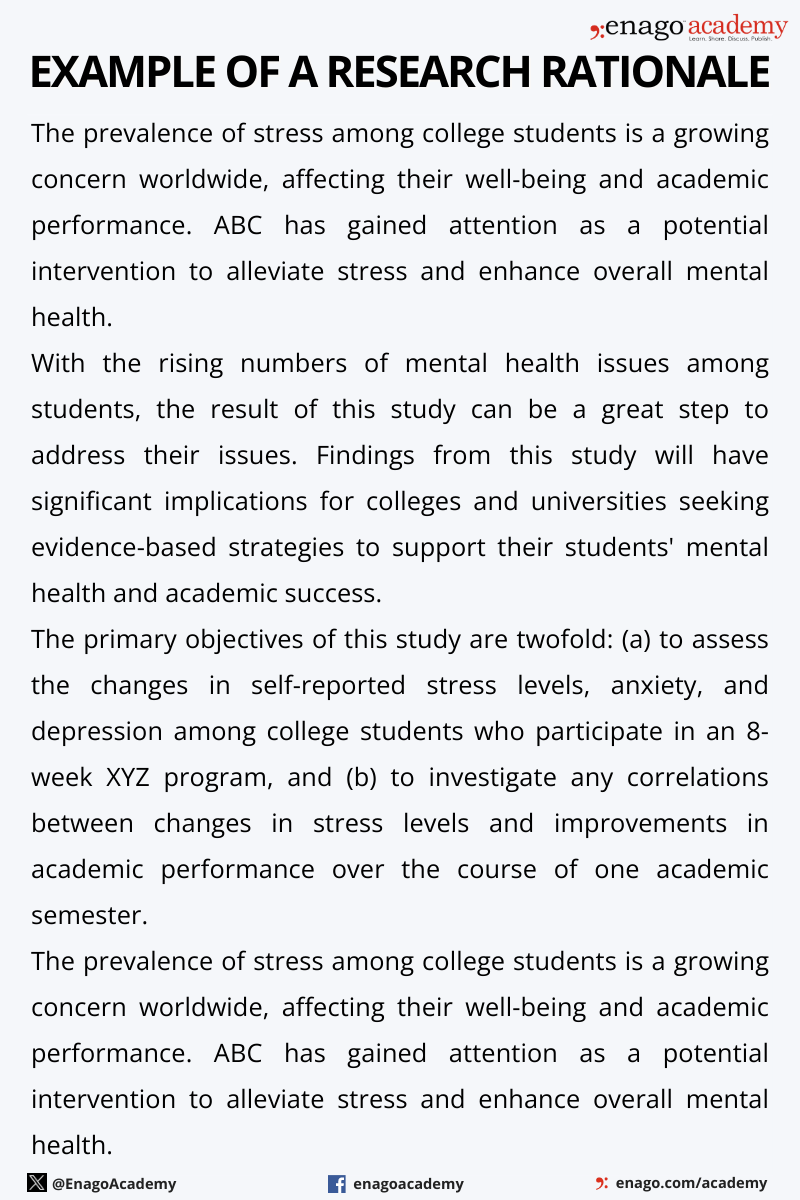
In conclusion, the research rationale serves as the cornerstone of a well-designed and successful research project. It ensures that research efforts are focused, meaningful, and ethically sound. Additionally, it provides a comprehensive and logical justification for embarking on a specific investigation. Therefore, by identifying research gaps, defining clear objectives, emphasizing significance, explaining the chosen methodology, addressing ethical considerations, and recognizing potential limitations, researchers can lay the groundwork for impactful and valuable contributions to the scientific community.
So, are you ready to delve deeper into the world of research and hone your academic writing skills? Explore Enago Academy ‘s comprehensive resources and courses to elevate your research and make a lasting impact in your field. Also, share your thoughts and experiences in the form of an article or a thought piece on Enago Academy’s Open Platform .
Join us on a journey of scholarly excellence today!
Frequently Asked Questions
A rationale of the study can be written by including the following points: 1. Background of the Research/ Study 2. Identifying the Knowledge Gap 3. An Overview of the Goals and Objectives of the Study 4. Methodology and its Significance 5. Relevance of the Research
Start writing a research rationale by defining the research problem and discussing the literature gap associated with it.
A research rationale can be ended by discussing the expected results and summarizing the need of the study.
A rationale for thesis can be made by covering the following points: 1. Extensive coverage of the existing literature 2. Explaining the knowledge gap 3. Provide the framework and objectives of the study 4. Provide a robust justification for the study/ research 5. Highlight the potential of the research and the expected outcomes
A rationale for dissertation can be made by covering the following points: 1. Highlight the existing reference 2. Bridge the gap and establish the context of your research 3. Describe the problem and the objectives 4. Give an overview of the methodology
Rate this article Cancel Reply
Your email address will not be published.

Enago Academy's Most Popular Articles

- Promoting Research
Graphical Abstracts Vs. Infographics: Best practices for using visual illustrations for increased research impact
Dr. Sarah Chen stared at her computer screen, her eyes staring at her recently published…

- Publishing Research
10 Tips to Prevent Research Papers From Being Retracted
Research paper retractions represent a critical event in the scientific community. When a published article…

- Industry News
Google Releases 2024 Scholar Metrics, Evaluates Impact of Scholarly Articles
Google has released its 2024 Scholar Metrics, assessing scholarly articles from 2019 to 2023. This…
![how to write rationale in research paper What is Academic Integrity and How to Uphold it [FREE CHECKLIST]](https://www.enago.com/academy/wp-content/uploads/2024/05/FeatureImages-59-210x136.png)
Ensuring Academic Integrity and Transparency in Academic Research: A comprehensive checklist for researchers
Academic integrity is the foundation upon which the credibility and value of scientific findings are…

- Reporting Research
How to Optimize Your Research Process: A step-by-step guide
For researchers across disciplines, the path to uncovering novel findings and insights is often filled…
Mitigating Survivorship Bias in Scholarly Research: 10 tips to enhance data integrity
The Power of Proofreading: Taking your academic work to the next level

Sign-up to read more
Subscribe for free to get unrestricted access to all our resources on research writing and academic publishing including:
- 2000+ blog articles
- 50+ Webinars
- 10+ Expert podcasts
- 50+ Infographics
- 10+ Checklists
- Research Guides
We hate spam too. We promise to protect your privacy and never spam you.
- AI in Academia
- Career Corner
- Diversity and Inclusion
- Infographics
- Expert Video Library
- Other Resources
- Enago Learn
- Upcoming & On-Demand Webinars
- Peer Review Week 2024
- Open Access Week 2023
- Conference Videos
- Enago Report
- Journal Finder
- Enago Plagiarism & AI Grammar Check
- Editing Services
- Publication Support Services
- Research Impact
- Translation Services
- Publication solutions
- AI-Based Solutions
- Thought Leadership
- Call for Articles
- Call for Speakers
- Author Training
- Edit Profile
I am looking for Editing/ Proofreading services for my manuscript Tentative date of next journal submission:

Which among these features would you prefer the most in a peer review assistant?
- PRO Courses Guides New Tech Help Pro Expert Videos About wikiHow Pro Upgrade Sign In
- EDIT Edit this Article
- EXPLORE Tech Help Pro About Us Random Article Quizzes Request a New Article Community Dashboard This Or That Game Happiness Hub Popular Categories Arts and Entertainment Artwork Books Movies Computers and Electronics Computers Phone Skills Technology Hacks Health Men's Health Mental Health Women's Health Relationships Dating Love Relationship Issues Hobbies and Crafts Crafts Drawing Games Education & Communication Communication Skills Personal Development Studying Personal Care and Style Fashion Hair Care Personal Hygiene Youth Personal Care School Stuff Dating All Categories Arts and Entertainment Finance and Business Home and Garden Relationship Quizzes Cars & Other Vehicles Food and Entertaining Personal Care and Style Sports and Fitness Computers and Electronics Health Pets and Animals Travel Education & Communication Hobbies and Crafts Philosophy and Religion Work World Family Life Holidays and Traditions Relationships Youth
- Browse Articles
- Learn Something New
- Quizzes Hot
- Happiness Hub
- This Or That Game
- Train Your Brain
- Explore More
- Support wikiHow
- About wikiHow
- Log in / Sign up
- Education and Communications
- College University and Postgraduate
- Academic Writing
How to Write a Study Rationale
Last Updated: May 19, 2023 Fact Checked
This article was co-authored by Jake Adams and by wikiHow staff writer, Jennifer Mueller, JD . Jake Adams is an academic tutor and the owner of Simplifi EDU, a Santa Monica, California based online tutoring business offering learning resources and online tutors for academic subjects K-College, SAT & ACT prep, and college admissions applications. With over 14 years of professional tutoring experience, Jake is dedicated to providing his clients the very best online tutoring experience and access to a network of excellent undergraduate and graduate-level tutors from top colleges all over the nation. Jake holds a BS in International Business and Marketing from Pepperdine University. This article has been fact-checked, ensuring the accuracy of any cited facts and confirming the authority of its sources. This article has been viewed 60,270 times.
A study rationale explains the reason for a study and the importance of its findings for a particular field. Commonly, you'll need to write a study rationale as part of a university course of study, although you may also need to write one as a professional researcher to apply for funding or other support. As a student, your study rationale also justifies how it fulfills the requirements for your degree program or course of study. Do research before you write your study rationale so that you can discuss the previous work your study builds on and explain its significance to your field. Thorough research is also important in the professional context because your rationale will likely become part of the contract if funding or support is approved. [1] X Research source
Describing What You Hope to Accomplish

- For example, suppose you want to study how working the night shift affects the academic performance of college students who are taking classes during the day. A narrow question would measure a specific impact based on a specific amount of hours worked.

- Justify the methodology you're using. If there's another methodology that might accomplish the same result, describe it and explain why your methodology is superior — perhaps because it's more efficient, takes less time, or uses fewer resources. For example, you might get more information out of personal interviews, but creating an online questionnaire is more cost-effective.
- Particularly if you're seeking funding or support, this section of your rationale will also include details about the cost of your study and the facilities or resources you'll need. [3] X Research source
Tip: A methodology that is more complex, difficult, or expensive requires more justification than one that is straightforward and simple.

- For example, if you're studying the effect of working the night shift on academic performance, you might hypothesize that working 4 or more nights a week lowers students' grade point averages by more than 1 point.

- Use action words, such as "quantify" or "establish," when writing your goals. For example, you might write that one goal of your study is to "quantify the degree to which working at night inhibits the academic performance of college students."
- If you are a professional researcher, your objectives may need to be more specific and concrete. The organization you submit your rationale to will have details about the requirements to apply for funding and other support. [5] X Research source
Explaining Your Study's Significance

- Going into extensive detail usually isn't necessary. Instead, highlight the findings of the most significant work in the field that addressed a similar question.
- Provide references so that your readers can examine the previous studies for themselves and compare them to your proposed study.

- Methodological limitations: Previous studies failed to measure the variables appropriately or used a research design that had problems or biases
- Contextual limitations: Previous studies aren't relevant because circumstances have changed regarding the variables measured
- Conceptual limitations: Previous studies are too tied up in a specific ideology or framework

- For example, if a previous study had been conducted to support a university's policy that full-time students were not permitted to work, you might argue that it was too tied up in that specific ideology and that this biased the results. You could then point out that your study is not intended to advance any particular policy.
Tip: If you have to defend or present your rationale to an advisor or team, try to anticipate the questions they might ask you and include the answers to as many of those questions as possible.
Including Academic Proposal Information

- As a student, you might emphasize your major and specific classes you've taken that give you particular knowledge about the subject of your study. If you've served as a research assistant on a study with a similar methodology or covering a similar research question, you might mention that as well.
- If you're a professional researcher, focus on the experience you have in a particular field as well as the studies you've done in the past. If you have done studies with a similar methodology that were important in your field, you might mention those as well.
Tip: If you don't have any particular credentials or experience that are relevant to your study, tell the readers of your rationale what drew you to this particular topic and how you became interested in it.

- For example, if you are planning to conduct the study as fulfillment of the research requirement for your degree program, you might discuss any specific guidelines for that research requirement and list how your study meets those criteria.

- In most programs, there will be specific wording for you to include in your rationale if you're submitting it for a certain number of credits. Your instructor or advisor can help make sure you've worded this appropriately.
Study Rationale Outline and Example

Expert Q&A
- This article presents an overview of how to write a study rationale. Check with your instructor or advisor for any specific requirements that apply to your particular project. Thanks Helpful 0 Not Helpful 0
You Might Also Like

- ↑ https://research.com/research/how-to-write-research-methodology
- ↑ https://ris.leeds.ac.uk/applying-for-funding/developing-your-proposal/resources-and-tips/key-questions-for-researchers/
- ↑ https://www.cwauthors.com/article/how-to-write-the-rationale-for-your-research
- ↑ http://www.writingcentre.uct.ac.za/sites/default/files/image_tool/images/167/Rationale.pdf
- ↑ https://www.niaid.nih.gov/grants-contracts/write-research-plan
- ↑ https://www.esc.edu/degree-planning-academic-review/degree-program/student-degree-planning-guide/rationale-essay-writing/writing-tips/
About This Article

- Send fan mail to authors
Did this article help you?

Featured Articles

Trending Articles

Watch Articles

- Terms of Use
- Privacy Policy
- Do Not Sell or Share My Info
- Not Selling Info
wikiHow Tech Help Pro:
Develop the tech skills you need for work and life

How to Write a Rationale: A Guide for Research and Beyond
Ever found yourself scratching your head, wondering how to justify your choice of a research topic or project? You’re not alone! Writing a rationale, which essentially means explaining the ‘why’ behind your decisions, is crucial to any research process. It’s like the secret sauce that adds flavour to your research recipe. So, the only thing you need to know is how to write a rationale.

What is a Rationale?
A rationale in research is essentially the foundation of your study. It serves as the justification for undertaking a particular research project. At its core, the rationale explains why the research was conducted or needs to be conducted, thus addressing a specific knowledge gap or research question.
Here’s a breakdown of the key elements involved in crafting a rationale:
Linking Background to Research Question:
The rationale should connect the background of the study to your specific research question. It involves presenting and discussing existing data on your topic, identifying gaps or issues in the current understanding, and explaining why addressing them is important.
Objectives and Significance:
Your rationale should clearly outline your research objectives – what you hope to discover or achieve through the study. It should also emphasize the subject’s significance in your field and explain why more or better research is needed.
Methodological Approach:
The rationale should briefly describe your proposed research method , whether qualitative (descriptive) or quantitative (experimental), and justify this choice.
Justifying the Need for Research:
The rationale isn’t just about what you’re doing and why it’s necessary. It can involve highlighting methodological, contextual, or conceptual limitations in previous studies and explaining how your research aims to overcome these limitations. Essentially, you’re making a case for why your research fills a crucial gap in existing knowledge.
Presenting Before and After Research:
Interestingly, the rationale can be presented before and after the research. Before the research, it forms a central part of the research proposal, setting out the plan for the work. After the research, it’s presented in a research article or dissertation to explain the focus on a specific research question and link it to the study’s aims and outcomes.
Elements to Include:
A good rationale should include a summary of conclusions from your literature review, identify what is currently unknown, discuss inconclusive or contested results from previous studies, and emphasize the necessity to improve or build on previous research.
Creating a rationale is a vital part of the research process, as it not only sets the stage for your study but also convinces readers of the value and necessity of your work.

How to Write a Rationale:
Writing a rationale for your research is crucial in conducting and presenting your study. It involves explaining why your research is necessary and important. Here’s a guide to help you craft a compelling rationale:
Identify the Problem or Knowledge Gap:
Begin by clearly stating the issue or gap in knowledge that your research aims to address. Explain why this problem is important and merits investigation. It is the foundation of your rationale and sets the stage for the need for your research.
Review the Literature:
Conduct a thorough review of existing literature on your topic. It helps you understand what research has already been done and what gaps or open questions exist. Your rationale should build on this background by highlighting these gaps and emphasizing the importance of addressing them.
Define Your Research Questions/Hypotheses:
Based on your understanding of the problem and literature review, clearly state the research questions or hypotheses that your study aims to explore. These should logically stem from the identified gaps or issues.
Explain Your Research Approach:
Describe the methods you will use for your research, including data collection and analysis techniques. Justify why these methods are appropriate for addressing your research questions or hypotheses.
Discuss the Potential Impact of Your Research: Explain the significance of your study. Consider both theoretical contributions and practical implications. For instance, how does your research advance existing knowledge? Does it have real-world applications? Is it relevant to a specific field or community?
Consider Ethical Considerations:
If your research involves human or animal subjects, discuss the ethical aspects and how you plan to conduct your study responsibly.
Contextualise Your Study:
Justify the relevance of your research by explaining how it fits into the broader context. Connect your study to current trends, societal needs, or academic discussions.
Support with Evidence:
Provide evidence or examples that underscore the need for your research. It could include citing relevant studies, statistics, or scenarios that illustrate the problem or gap your research addresses.
Methodological, Contextual, and Conceptual Limitations:
Address any limitations of previous research and how your study aims to overcome them. It can include methodological flaws in previous studies, changes in external factors that make past research less relevant, or the need to study a phenomenon within a new conceptual framework.
Placement in Your Paper:
Typically, the rationale is written toward the end of the introduction section of your paper, providing a logical lead-in to your research questions and methodology.
By following these steps and considering your audience’s perspective, you can write a strong and compelling rationale that clearly communicates the significance and necessity of your research project.
Frequently Asked Questions:
What makes a good research rationale.
A good rationale clearly identifies a gap in existing knowledge, builds on previous research, and outlines why your study is necessary and significant.
How detailed should my literature review be in the rationale?
Your literature review should be comprehensive enough to highlight the gaps your research aims to fill, but it should not overshadow the rationale itself.
Conclusion:
A well-crafted rationale is your ticket to making your research stand out. It’s about bridging gaps, challenging norms, and paving the way for new discoveries. So go ahead, make your rationale the cornerstone of your research narrative!
Award-Winning Results
Team of 11+ experts, 10,000+ page #1 rankings on google, dedicated to smbs, $175,000,000 in reported client revenue.
Up until working with Casey, we had only had poor to mediocre experiences outsourcing work to agencies. Casey & the team at CJ&CO are the exception to the rule.
Communication was beyond great, his understanding of our vision was phenomenal, and instead of needing babysitting like the other agencies we worked with, he was not only completely dependable but also gave us sound suggestions on how to get better results, at the risk of us not needing him for the initial job we requested (absolute gem).
This has truly been the first time we worked with someone outside of our business that quickly grasped our vision, and that I could completely forget about and would still deliver above expectations.
I honestly can't wait to work in many more projects together!
Related Articles
View All Post

Conversion Rate Optimization , Copywriting , Customer Experience
How to Tap Into What Your Customers Love & Hate
Casey Jones

Advertising , Copywriting
What does a Copywriter do at an Ad Agency: Things You Should Know if You’re a Copywriter

Copywriting
How to Write a Marketing Script: Take Your Marketing to the Next Level in 2023
*The information this blog provides is for general informational purposes only and is not intended as financial or professional advice. The information may not reflect current developments and may be changed or updated without notice. Any opinions expressed on this blog are the author’s own and do not necessarily reflect the views of the author’s employer or any other organization. You should not act or rely on any information contained in this blog without first seeking the advice of a professional. No representation or warranty, express or implied, is made as to the accuracy or completeness of the information contained in this blog. The author and affiliated parties assume no liability for any errors or omissions.
How to Write a Rationale for Your Research Paper
Learn how to write a compelling research rationale. Discover key elements, steps, and tips to justify your study and strengthen your academic paper.
Jun 25, 2024

A research rationale is a fundamental component of any academic paper, serving as the backbone that supports the entire study.
It's not just a formality or an introductory paragraph; rather, it's a critical element that justifies the need for your research and articulates its potential value to the academic community and beyond.
In essence, the rationale is your opportunity to convince readers—whether they're supervisors, peers, funding bodies, or journal editors—that your research is worth their time, attention, and potentially, their resources.

The Importance of a Well-Crafted Rationale
1. contextualizing your research.
A strong rationale provides the necessary context for your study. It situates your work within the broader landscape of existing research , helping readers understand where your study fits in the grand scheme of your field. This context is crucial because it demonstrates that you're not working in isolation, but rather building upon and contributing to a larger body of knowledge.
2. Demonstrating Originality and Significance
By clearly articulating the gap in current knowledge that your research aims to fill, you're effectively demonstrating the originality of your work. This is particularly important in academia , where novel contributions are highly valued. Your rationale should clarify that your study isn't merely replicating existing work but is pushing the boundaries of what's known in your field.
3. Justifying Resources and Efforts
Research often requires significant resources, both in terms of time and funding. Your rationale serves as a justification for these investments. It should convince readers that the potential outcomes of your study are worth the resources required to conduct it. This is especially crucial when applying for grants or seeking institutional support for your research.
4. Setting the Stage for Your Methodology
A well-written rationale naturally leads to your choice of methodology. By clearly stating the problem you're addressing and why it's important, you create a logical foundation for explaining how you plan to tackle it. This connection between your rationale and methodology strengthens the overall coherence of your research paper.
5. Enhancing the Impact of Your Findings
When you clearly articulate why your research question is important in your rationale, you're also setting the stage for discussing the implications of your findings later in your paper. A strong rationale makes it easier for readers to appreciate the significance of your results and their potential impact on the field.
Key Elements of an Effective Rationale
1. clear problem statement.
The cornerstone of your rationale is a clear, concise statement of the problem or question your research addresses. This statement should be specific enough to guide your research but broad enough to demonstrate its wider relevance. When formulating your problem statement, consider the following:
- What is the current state of knowledge in your field?
- What specific gap, contradiction, or unexplored area have you identified?
- Why is addressing this gap important?
Example: "Despite extensive research on climate change mitigation strategies, there's a lack of comprehensive studies examining the effectiveness of urban green spaces in reducing urban heat island effects in rapidly growing cities of the Global South."
2. Relevance to Existing Literature
Your rationale should demonstrate a thorough understanding of the current state of research in your field. This involves:
- Summarizing key findings from relevant studies
- Identifying trends, debates, or controversies in the literature
- Explaining how your research relates to or builds upon existing work
It's important to strike a balance here—show that you're familiar with the field, but also highlight the unique contribution your study will make.
3. Potential Impact of the Research
Articulate the potential outcomes of your study and why they matter. This could include:
- Theoretical advancements: How might your work challenge or refine existing theories?
- Practical applications: Could your findings inform policy decisions or improve professional practices?
- Societal benefits: How might your research contribute to solving broader societal challenges?
Be realistic in your claims, but don't undersell the potential significance of your work.
Steps to Write a Compelling Rationale

1. Identify the Research Problem
Start by clearly defining the specific issue or question your study will address. This involves:
- Conducting preliminary research to understand the current state of knowledge
- Identifying gaps or inconsistencies in existing research
- Formulating a clear, focused research question or hypothesis
2. Review Relevant Literature
Conduct a thorough review of current research related to your topic. This step is crucial for:
- Understanding the theoretical and empirical context of your research
- Identifying key debates or controversies in the field
- Spotting gaps or areas that need further exploration
As you review the literature, keep detailed notes on how each source relates to your research question and how it informs your rationale.
3. Articulate the Significance of Your Study
Explain why your research matters. This involves:
- Highlighting the theoretical or practical importance of your research question
- Discussing potential contributions to existing knowledge
- Explaining how your study might inform policy, practice, or future research
Be specific about the potential impact of your work, but avoid overstating its importance.
4. Explain Your Unique Approach or Perspective
Describe how your research approach differs from or builds upon previous work:
- Highlight any innovative methods or techniques you'll be using
- Explain how your perspective or approach adds value to the field
- Discuss how your study addresses limitations of previous research

5. Address Potential Counterarguments
Anticipate and address potential objections to your research:
- Acknowledge any limitations or potential weaknesses in your approach
- Explain why your study is valuable despite these challenges
- Demonstrate that you've considered alternative approaches and can justify your chosen method
Tips for Crafting a Compelling Rationale

Be Concise and Focused
While your rationale needs to be comprehensive, it should also be concise. Every sentence should serve a purpose in justifying your research. Avoid unnecessary jargon or overly complex language that might obscure your main points.
Use Evidence to Support Your Claims
Back up your arguments with evidence from credible sources. This might include:
- Statistics demonstrating the prevalence or impact of the problem you're studying
- Quotes from respected scholars in your field highlighting the need for further research
- Examples of real-world situations that illustrate the importance of your research question
Maintain Logical Flow
Ensure that your rationale follows a logical progression. Each point should naturally lead to the next, creating a compelling argument for the necessity and value of your research.
Tailor Your Rationale to Your Audience
Consider who will be reading your rationale. A funding body might be more interested in practical applications, while an academic journal might prioritize theoretical contributions. Adjust your focus accordingly.
Revise and Refine
Writing a strong rationale often requires multiple drafts. After writing your initial version:
- Take a break and return to it with fresh eyes
- Ask colleagues or mentors to review it and provide feedback
- Consider how each element contributes to justifying your research and remove anything that doesn't serve this purpose
Common Pitfalls to Avoid
Avoid general statements that could apply to any research. Be specific about the gap you're addressing and why your approach is valuable.
Disconnection from Prior Research
Don't present your research as if it exists in a vacuum. Always connect your work to existing literature and ongoing debates in your field.
Overstatement
While it's important to highlight the significance of your research, avoid hyperbole. Realistic, well-supported claims are more convincing than grandiose statements.
Lack of Focus
Ensure that every element of your rationale relates directly to your research question. Avoid tangents or unnecessary background information.
A well-crafted rationale is more than just a justification for your research —it's an opportunity to demonstrate your deep understanding of your field and your ability to contribute meaningfully to it. By clearly articulating the need for your study, its relevance to existing literature, and its potential impact, you set the stage for a compelling and impactful research paper.
Remember, your rationale is often the first thing readers encounter, so make it count. A strong rationale not only justifies your research but also engages your readers and invites them to join you on your academic journey.
Easily pronounces technical words in any field
Thesis Writing
Research Methodology
Research Rationale
Recent articles

What are the Responsibilities of a Cosigner in a Student Loan?
Aug 6, 2024
Financial Aid
College Funding
Cosigner Responsibilities
Student Loans

10 Best Productivity Books
Aug 13, 2024
Productivity Books
Time Management
Efficiency Tips
Self Improvement
Goal Setting

The Grad Student's Guide to Building a Study System That Actually Works
Derek Pankaew
Sep 17, 2024
active learning
work-life balance
academic productivity
time management
study techniques
graduate studies
Productivity Myths Debunked: What Really Works for Students
Sep 18, 2024
How To Make Rationale in Research: A Thorough Overview
Struggling to make the right rationale for your research? Learn how to make rationale in research to create the perfect plan for success.
Any academic or scientific discipline relies heavily on research. However, in order to do research properly, it is necessary to comprehend the rationale behind it. A research rationale is a succinct explanation of why a certain research project is required, describing the justifications for the study as well as the advantages it is expected to provide.
Writing a persuasive rationale is critical for obtaining approval for your research project and communicating the importance of your research. However, developing a convincing one can be difficult, especially for people new to research or unfamiliar with academic expectations.
After reading this thorough overview on “how to make rationale in research”, you will be better equipped to justify your research and communicate its significance to your academic community. Whether you are a student or a seasoned researcher, this article will provide valuable insights and strategies for creating a powerful research rationale.
What is a Rationale in Research?
A research rationale provides an organized strategy for the whole research and acts as the cornerstone of the research project. It contributes to the research’s rationale by stating why the study is significant, what its aims are, and what the expected findings are. In essence, it is a compelling argument for why the study should be carried out.
A well-written research rationale should be concise, precise, and persuasive. It should clarify the problem or issue that the study attempts to solve, the knowledge or understanding gap that the study seeks to fill, and the possible advantages that it may provide. Furthermore, the reasoning should demonstrate that the research is possible, ethical, and pertinent to the subject of study.
A research project that lacks a strong rationale may lack direction and may fail to address the stated problem or issue. It can also make obtaining financing or permission from institutional review boards (IRBs) or other governing bodies difficult. As a result, devoting effort to developing a compelling research rationale is critical to the success of any research.
Why is a Research Rationale Important?
For many reasons, a research rationale is crucial. For starters, it helps to explain the necessity for the research project by demonstrating why the study is required and what gaps in knowledge or understanding it attempts to fill.
Second, it includes a clear and succinct problem statement that outlines the precise research questions or objectives that the study intends to answer.
Finally, it aids in demonstrating the research’s potential influence by demonstrating how it may lead to the creation of new knowledge, practices, or policies.
To achieve this, you should focus on communicating the potential benefits of your project, while also acknowledging its limitations. This requires a thorough understanding of the research problem and a critical evaluation of the proposed methods and approaches.
It is also important to include sufficient detail about the methods you plan to use, any ethical considerations to consider, and how you will evaluate your results. This helps to demonstrate that you have a well-developed and thoughtful research plan, which is essential for securing funding or gaining approval from academic institutions.
Consider an example of a research project to demonstrate this. Assume you want to investigate the effectiveness of a new teaching style in enhancing student learning results. A compelling rationale for this study might include:
- Demonstrating the need for the study: You may explain that there is a rising concern in the educational environment about low student performance and that standard teaching approaches may not be helpful for all students.
- Providing a clear problem statement: For example, you might say that the study will look into whether the new teaching approach is effective at enhancing student learning outcomes and what factors may impact its effectiveness.
- Highlighting the research’s potential impact: You might argue that if the study shows that if the new teaching approach is effective, it will be adopted in other schools, increasing student learning results.
The research rationale in this example gives a clear and compelling explanation for the necessity to perform the study, emphasizing its relevance, problem statement, and possible impact.
A Model: Problem-Solution-Rationale
The Problem-Solution-Rationale model is a helpful framework for developing a strong research rationale, it can assist you in organizing your rationale and ensuring that it clearly conveys all information required for an effective research rationale. This model consists of three major components: identifying the problem, proposing a solution, and explaining the rationale for why the proposed solution is necessary.
Identifying the Problem
The first stage in this model is to identify the problem that the study will attempt to solve. This could entail assessing existing research on the topic, finding gaps in knowledge or understanding, or emphasizing new difficulties or issues that have occurred. A clear problem statement serves as the research’s foundation, outlining the specific research questions or objectives that the study seeks to address.
Proposing a Solution
The model’s second stage is to suggest a solution to the identified problem. This might include creating a new theoretical framework, putting a new hypothesis to the test, or suggesting a new intervention or practice. The proposed solution should be based on a thorough review of the literature and a clear understanding of the research problem.
Providing a Rationale
The model’s final stage is to present a rationale for why the suggested solution is required. This might include emphasizing the possible advantages of the suggested solution, explaining how it builds on past research, or demonstrating how it fills a knowledge or understanding gap.
Language to Signal Rationale
Effective communication is crucial when it comes to justifying the significance of your research. One of the ways you can achieve this is by using specific language that signals the rationale to your intended audience. By doing so, you can clearly convey the reasons for your study and its potential benefits to your audience. Here are a couple of such examples:
- “The goal of this research is to fill a knowledge gap on…”
- “We selected this methodology because it allows us to address the research question more effectively.”
- “Our approach is informed by the need to address the practical challenges of…”
- “This research is significant because it contributes to our understanding of…”
Using statements like these can assist to convey the rationale to your audience and stress the significance of your research.
Language for Further Justification – Showing Importance
Once you’ve indicated the rationale for your research, it’s critical to give further justification that emphasizes the relevance of your study. Here are some sentences that might be used to emphasize the significance of your research:
- “By addressing this gap in knowledge, we can gain a better understanding of…”
- “This study is significant because it contributes to the development of…”
- “The implications of this research are far-reaching, and it can inform…”
- “By examining this issue, we can shed light on the broader implications of…”
How to Make Rationale In Research
Writing a compelling rationale for a research proposal is critical to obtaining funds and support for the research you are conducting. In this section, you will learn how to make rationale in research by implementing the four crucial aspects of a rationale: background on all previous research on the issue, the study’s open questions, identification of gaps in the literature, and the importance of filling these gaps.
Background on All Previous Research:
You must clarify the existing level of knowledge of the topic to offer a clear grasp of your research proposal. This entails analyzing all past research on the subject and determining what has been done previously. It is critical to present a thorough summary of existing research, including major results, hypotheses, and methodology. This can assist in demonstrating that you have a deep awareness of the field’s present state of knowledge and how your planned study might contribute to it.
The Study’s Open Questions
The next stage is to identify the study’s open questions. This entails investigating areas where existing knowledge falls short and comprehension gaps exist. You may highlight the need for more research and explain how your research will address these gaps by identifying unanswered questions.
Literature Gaps
Once you’ve discovered the open questions, describe how your research will solve them. This requires recognizing gaps in the current literature and describing how your research will address these gaps. Make it a point to explain how the proposed research differs from prior studies and how it will add to existing knowledge in the subject.
The Importance of Filling These Gaps:
Finally, it is critical to demonstrate the importance of filling these gaps in the current literature. This includes showing the possible advantages of the research and outlining how it will help the field if it can result in new ideas or new approaches, or the impact it will have on real society implications.
Unleash the Power of Infographics with Mind the Graph
Whether you’re a seasoned scientist or just starting out in your research career, Mind the Graph is a valuable, user-friendly, and intuitive tool that can help to elevate the impact of your research by making it more engaging, accessible, and understandable to a wider audience.

Subscribe to our newsletter
Exclusive high quality content about effective visual communication in science.
Sign Up for Free
Try the best infographic maker and promote your research with scientifically-accurate beautiful figures
no credit card required
About Jessica Abbadia
Jessica Abbadia is a lawyer that has been working in Digital Marketing since 2020, improving organic performance for apps and websites in various regions through ASO and SEO. Currently developing scientific and intellectual knowledge for the community's benefit. Jessica is an animal rights activist who enjoys reading and drinking strong coffee.
Content tags

Rationale for the Study
It is important for you to be able to explain the importance of the research you are conducting by providing valid arguments. Rationale for the study, also referred to as justification for the study, is reason why you have conducted your study in the first place. This part in your paper needs to explain uniqueness and importance of your research. Rationale for the study needs to be specific and ideally, it should relate to the following points:
1. The research needs to contribute to the elimination of a gap in the literature. Elimination of gap in the present literature is one of the compulsory requirements for your study. In other words, you don’t need to ‘re-invent the wheel’ and your research aims and objectives need to focus on new topics. For example, you can choose to conduct an empirical study to assess the implications of COVID-19 pandemic on the numbers of tourists visitors in your city. This might be previously undressed topic, taking into account that COVID-19 pandemic is a relatively recent phenomenon.
Alternatively, if you cannot find a new topic to research, you can attempt to offer fresh perspectives on existing management, business or economic issues. For example, while thousands of studies have been previously conducted to study various aspects of leadership, this topic as far from being exhausted as a research area. Specifically, new studies can be conducted in the area of leadership to analyze the impacts of new communication mediums such as TikTok, and other social networking sites on leadership practices.
You can also discuss the shortcomings of previous works devoted to your research area. Shortcomings in previous studies can be divided into three groups:
a) Methodological limitations . Methodology employed in previous study may be flawed in terms of research design, research approach or sampling.
b) Contextual limitations . Relevance of previous works may be non-existent for the present because external factors have changed.
c) Conceptual limitations . Previous studies may be unjustifiably bound up to a particular model or an ideology.
While discussing the shortcomings of previous studies you should explain how you are going to correct them. This principle is true to almost all areas in business studies i.e. gaps or shortcomings in the literature can be found in relation to almost all areas of business and economics.
2. The research can be conducted to solve a specific problem. It helps if you can explain why you are the right person and in the right position to solve the problem. You have to explain the essence of the problem in a detailed manner and highlight practical benefits associated with the solution of the problem. Suppose, your dissertation topic is “a study into advantages and disadvantages of various entry strategies into Chinese market”. In this case, you can say that practical implications of your research relates to assisting businesses aiming to enter Chinese market to do more informed decision making.
Alternatively, if your research is devoted to the analysis of impacts of CSR programs and initiatives on brand image, practical contributions of your study would relate to contributing to the level of effectiveness of CSR programs of businesses.
Additional examples of studies that can assist to address specific practical problems may include the following:
- A study into the reasons of high employee turnover at Hanson Brick
- A critical analysis of employee motivation problems at Esporta, Finchley Road, London
- A research into effective succession planning at Microsoft
- A study into major differences between private and public primary education in the USA and implications of these differences on the quality of education
However, it is important to note that it is not an obligatory for a dissertation to be associated with the solution of a specific problem. Dissertations can be purely theory-based as well. Examples of such studies include the following:
- Born or bred: revising The Great Man theory of leadership in the 21 st century
- A critical analysis of the relevance of McClelland’s Achievement theory to the US information technology industry
- Neoliberalism as a major reason behind the emergence of the global financial and economic crisis of 2007-2009
- Analysis of Lewin’s Model of Change and its relevance to pharmaceutical sector of France
3. Your study has to contribute to the level of professional development of the researcher . That is you. You have to explain in a detailed manner in what ways your research contributes to the achievement of your long-term career aspirations.
For example, you have selected a research topic of “ A critical analysis of the relevance of McClelland’s Achievement theory in the US information technology industry ”. You may state that you associate your career aspirations with becoming an IT executive in the US, and accordingly, in-depth knowledge of employee motivation in this industry is going to contribute your chances of success in your chosen career path.
Therefore, you are in a better position if you have already identified your career objectives, so that during the research process you can get detailed knowledge about various aspects of your chosen industry.

My e-book, The Ultimate Guide to Writing a Dissertation in Business Studies: a step by step assistance offers practical assistance to complete a dissertation with minimum or no stress. The e-book covers all stages of writing a dissertation starting from the selection to the research area to submitting the completed version of the work within the deadline.
John Dudovskiy
- Translation
How to write the Rationale for your research
By charlesworth author services.
- Charlesworth Author Services
- 19 November, 2021
The rationale for one’s research is the justification for undertaking a given study. It states the reason(s) why a researcher chooses to focus on the topic in question, including what the significance is and what gaps the research intends to fill. In short, it is an explanation that rationalises the need for the study. The rationale is typically followed by a hypothesis/ research question (s) and the study objectives.
When is the rationale for research written?
The rationale of a study can be presented both before and after the research is conducted.
- Before : The rationale is a crucial part of your research proposal , representing the plan of your work as formulated before you execute your study.
- After : Once the study is completed, the rationale is presented in a research paper or dissertation to explain why you focused on the particular question. In this instance, you would link the rationale of your research project to the study aims and outcomes.
Basis for writing the research rationale
The study rationale is predominantly based on preliminary data . A literature review will help you identify gaps in the current knowledge base and also ensure that you avoid duplicating what has already been done. You can then formulate the justification for your study from the existing literature on the subject and the perceived outcomes of the proposed study.
Length of the research rationale
In a research proposal or research article, the rationale would not take up more than a few sentences . A thesis or dissertation would allow for a longer description, which could even run into a couple of paragraphs . The length might even depend on the field of study or nature of the experiment. For instance, a completely novel or unconventional approach might warrant a longer and more detailed justification.
Basic elements of the research rationale
Every research rationale should include some mention or discussion of the following:
- An overview of your conclusions from your literature review
- Gaps in current knowledge
- Inconclusive or controversial findings from previous studies
- The need to build on previous research (e.g. unanswered questions, the need to update concepts in light of new findings and/or new technical advancements).
Example of a research rationale
Note: This uses a fictional study.
Abc xyz is a newly identified microalgal species isolated from fish tanks. While Abc xyz algal blooms have been seen as a threat to pisciculture, some studies have hinted at their unusually high carotenoid content and unique carotenoid profile. Carotenoid profiling has been carried out only in a handful of microalgal species from this genus, and the search for microalgae rich in bioactive carotenoids has not yielded promising candidates so far. This in-depth examination of the carotenoid profile of Abc xyz will help identify and quantify novel and potentially useful carotenoids from an untapped aquaculture resource .
In conclusion
It is important to describe the rationale of your research in order to put the significance and novelty of your specific research project into perspective. Once you have successfully articulated the reason(s) for your research, you will have convinced readers of the importance of your work!
Maximise your publication success with Charlesworth Author Services.
Charlesworth Author Services , a trusted brand supporting the world’s leading academic publishers, institutions and authors since 1928.
To know more about our services, visit: Our Services
Share with your colleagues
Scientific Editing Services
Sign up – stay updated.
We use cookies to offer you a personalized experience. By continuing to use this website, you consent to the use of cookies in accordance with our Cookie Policy.

1. Researching, Writing and Presenting Information - A How To Guide: Writing a Rationale
- Brainstorming and Planning
- Effective Research
- Note-taking
- Writing an Essay
- Writing a Discussion
- Writing an Exposition
Writing a Rationale
- Years 11 & 12
- Writing a Blog Post
- Writing a Feature Article
- Preparing Oral Presentations
- Creating a Podcast
- Technologies
- Effective Proofreading Skills
- Glossary of Common Instruction Terms
- Glossary of Literary Terms
- How to use Appendices
- How to paraphrase
A rationale is a set of reasons or an explanation for a course of action or beliefs. Sometimes it is referred to as a statement of intent. In a school context, it is most often required to explain your creative choices in response to a task. In English, the purpose of a rationale is to link your creative response to the text studied and the prompt.
It should be written in formal English and structured in logical paragraphs. The rationale should be an integrated discussion of ideas and language choices, rather than a list of techniques. Use F-CLAP to help you with the content of your Rationale.

Form: Why have I chosen to use this form? (Eg: poetry, painting, narrative)
Context: What is the broader context of the piece? (Eg: social & historical context)
Language: What language choices have I made? How have the language choices of author's studied influenced my decisions? (Eg: structures, features, devices etc.)
Audience: Who am I writing/creating for? (consider age, gender, cultural & religious background, biases etc. )
Purpose: Why am I writing/creating this piece?
Always refer to your Assessment task outline for specific details to writing your rationale.
Guided Brainstorm
Click on the image below to access the fillable guided brainstorm sheet.

Suggested Structure
Rationales vary depending on the nature of the task. Please read task instructions carefully and seek clarification from your teacher about what is required. An example of a suggested structure is provided below.
Part A : Comment on the text to which you are responding.
- Give an introductory explanation of the aspect(s) of the text/stimulus material that inspired your response.
Part B : Explain the purpose/aim of your response.
- Provide a clear explanation of your intention in the response. For example, you may be focussing on a particular issue or character. You may wish to elicit an emotional response from the reader or state a philosophical view point.
Part C: Discuss your choice of medium/approach to the task Explain your choice of medium.
- For example if your response is non-written such as a poster, collage or an electronic image(s), justify your use of colour, texture, symbolism, and composition. If your response is a story you could discuss your choice of setting, characterisation and dialogue. You may have used a particular narrative structure that requires explanation
- Explain any unusual/particular features of your response. How do they enhance your response?
Your rationale should include relevant references (examples/quotations) where appropriate.
- << Previous: Writing an Exposition
- Next: Writing a Practical Report >>
- Last Updated: Sep 15, 2022 2:24 PM
- URL: https://stcc.libguides.com/c.php?g=926682
- +91 9884350006
- +1-972-502-9262
- [email protected]

How to write the rationale for research?

How to evaluate bias in meta-analysis within meta-epidemiological studies?

How to handle discrepancies while you collect data for systemic review
The research’s rationale describes why the study was undertaken (in a thesis or article) or why the study should be accompanied (in a proposal). This implies that the research justification should explain why the study is/was necessary to the reader or examiner. It is sometimes known as a study’s “purpose” or “justification.” While this is not difficult to understand in and of itself, you may be questioning how the study’s reasoning differs from your research question or the explanation of the problem of your study and how it turns into the remainder of your thesis or research paper.
Introduction
The rationale of your research is the objective of the study. The reason should explain why the research was started in the first place. It’s an essential part of your work since it demonstrates the significance and uniqueness of your research. As a result, it’s often referred to as the study’s reason. Your analysis would be arranged in an ideal world: observation, justification, hypothesis, objectives, methodology, findings, and conclusions. To begin writing your rationale, offer background information on all the research on your study topic. Then consider, “What is missing?” or “What are the research’s unanswered questions?” Identify the gaps in the literature and explain why they must be filled. Finally, it resolves to serve as the foundation for your investigation.
A study’s reason might be provided before and after the investigation.
- Before : The reason is essential to your research proposal since it represents the work plan you developed before carrying out your investigation.
- After : When the investigation is over, the justification is given in a literature research paper or thesis to explain why you choose to focus on the specific subject. In this case, you would connect your research project’s logic to the study’s goals and outcomes.

The rationale for the study
Consider a research rationale, a set of arguments explaining why a study is required and significant in light of its context. It is also the study’s reason, rationale, or thesis statement. Essentially, you want to persuade your reader that you are not repeating what others have already stated and that your perspective did not emerge from thin air. You’ve researched and found a knowledge gap that this justification now fills.
Basic elements of the research rationale
Typically, a clinical research justification is provided near the conclusion of the introduction. This area is prominent in high-impact-factor international publications such as Nature and Science. There is usually a line after the introduction that begins with “here we show” or “in this paper, we demonstrate.” This paragraph is part of a logical sequence of information, which is often (but not always) presented in the following order:
- Research background : What brings you here? Present (and cite) previous research and data on the subject.
- A gap in the literature : Which gaps haven’t been addressed based on the background evidence presented? Or, what is the problem that needs to be solved/process that needs to be improved?
- Research rationale : Why is it critical to fill these gaps or to solve/improve this problem/process?
- Research objectives and methodology : What will you investigate (your research question/goal)? How are you going to approach it (methods)?
Hope to accomplish
Describe the issue that your research will address: The problem your study will address, also known as your research subject, informs the reader about the scope of your investigation. Your research topic should be as detailed as possible, especially in a professional environment. In addition, specific research topics are more likely to lead to financing opportunities for your project.
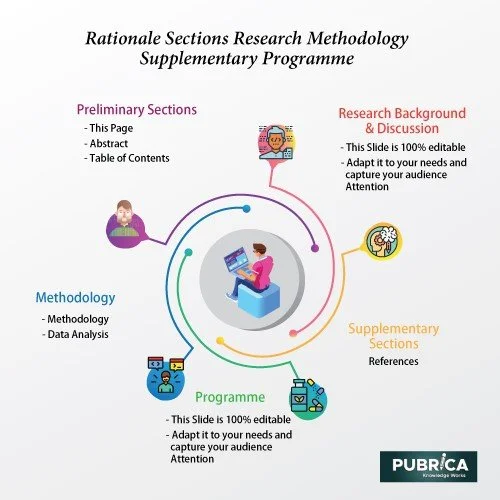
Discourse the methodology for your study: Explain to your audience how you intend to conduct your clinical research and offer a broad timeline for each stage. Include details about how you plan to contact research participants if your study spans several months or years.
Predict the results of your study: A hypothesis isn’t always necessary, but it might assist in supporting your case. If you can make a more than speculative forecast, include it in your rationale. To represent your research topic, make your hypothesis as detailed as possible.
Clarify what you hope your study will accomplish: Your clinical research should uncover something fresh that has not before been explored in your sector. Finding something that no one else has discovered isn’t enough. You must also explain that your findings will significantly advance your field or that they will clear up a past misunderstanding.
In a journal-accepted research manuscript, your justification should be no more than a few words long (no longer than one brief paragraph). A longer description is generally allowed in a manuscript or thesis; depending on the length and type of your material, this might be up to several paragraphs lengthy. A wholly new or unique technique may require a more prolonged and extensive justification than one that deviates somewhat from well-established procedures and approaches.
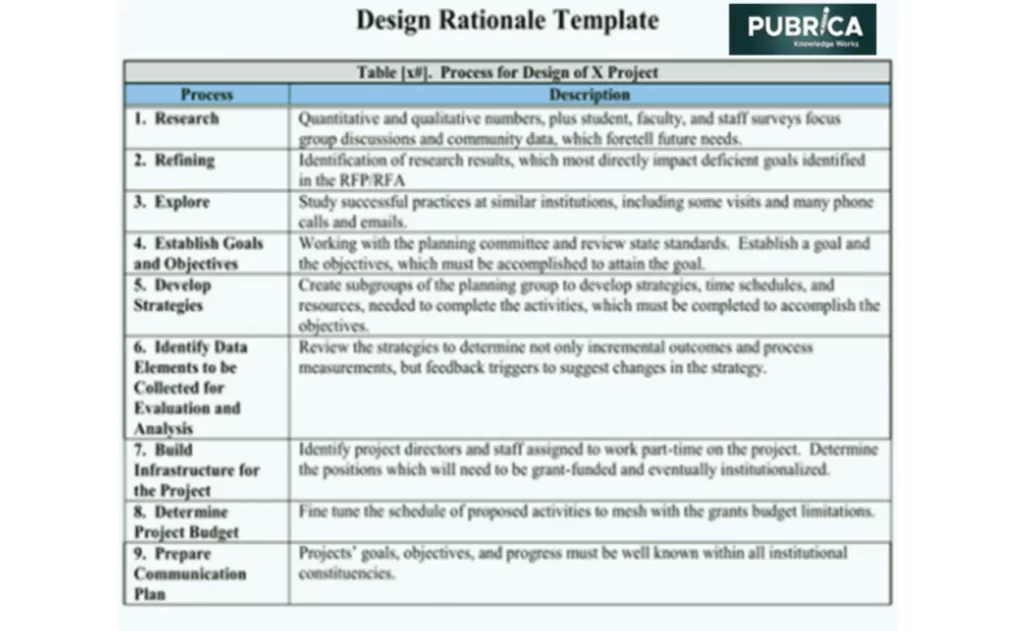
It is critical to discuss the reason for your study to understand the relevance and uniqueness of your research effort. You will have persuaded readers of the significance of your work once you have adequately expressed the reason(s) for your study. Defining the justification research is a critical component of the research process and academic writing in any reasoning research endeavour . This is what you use in your research paper for the first time to explain the research problem inside your dissertation subject. This will give you the research reason you require to define your research topic and potential outcomes.
About Pubrica
Pubrica’s research team generates scientific and medical research articles that practitioners and authors may use as a resource. Pubrica medical writers help you create and modify the introduction by advising the reader of any defects or holes in the chosen research subject. Our experts are familiar with the structure that begins with a broad topic and then continues to a problem and background before going on to a targeted issue to provide the hypothesis.
- Huggett, Kathryn N., and William B. Jeffries. “Overview of active learning research and rationale for active learning.” How-to Guide for Active Learning . Springer, Cham, 2021. 1-7.
- Bandrowski, Anita, et al. “Sparc data structure: Rationale and design of a fair standard for biomedical research data.” bioRxiv (2021).
- Andriotis, Konstantinos. “RATIONALE FOR LAUNCHING A NEW JOURNAL.” Journal of Qualitative Research 1.1 (2020): 1-6.
- Russell, David R. “Retreading, Non-ing, and a TPC Rationale for Sub-disciplining in Writing Studies.” College English 82.5 (2020): 472-483.
pubrica-academy
Related posts.

Causes of Prolonged Use of Masks during Covid- 19 Pandemic

How to Structure your research article

How Evidence-based practice (EBP) can be translated as health communication or patient education materials
Comments are closed.
- Privacy Policy

Home » Background of The Study – Examples and Writing Guide
Background of The Study – Examples and Writing Guide
Table of Contents

Background of The Study
Definition:
Background of the study refers to the context, circumstances, and history that led to the research problem or topic being studied. It provides the reader with a comprehensive understanding of the subject matter and the significance of the study.
The background of the study usually includes a discussion of the relevant literature, the gap in knowledge or understanding, and the research questions or hypotheses to be addressed. It also highlights the importance of the research topic and its potential contributions to the field. A well-written background of the study sets the stage for the research and helps the reader to appreciate the need for the study and its potential significance.
How to Write Background of The Study
Here are some steps to help you write the background of the study:
Identify the Research Problem
Start by identifying the research problem you are trying to address. This problem should be significant and relevant to your field of study.
Provide Context
Once you have identified the research problem, provide some context. This could include the historical, social, or political context of the problem.
Review Literature
Conduct a thorough review of the existing literature on the topic. This will help you understand what has been studied and what gaps exist in the current research.
Identify Research Gap
Based on your literature review, identify the gap in knowledge or understanding that your research aims to address. This gap will be the focus of your research question or hypothesis.
State Objectives
Clearly state the objectives of your research . These should be specific, measurable, achievable, relevant, and time-bound (SMART).
Discuss Significance
Explain the significance of your research. This could include its potential impact on theory , practice, policy, or society.
Finally, summarize the key points of the background of the study. This will help the reader understand the research problem, its context, and its significance.
How to Write Background of The Study in Proposal
The background of the study is an essential part of any proposal as it sets the stage for the research project and provides the context and justification for why the research is needed. Here are the steps to write a compelling background of the study in your proposal:
- Identify the problem: Clearly state the research problem or gap in the current knowledge that you intend to address through your research.
- Provide context: Provide a brief overview of the research area and highlight its significance in the field.
- Review literature: Summarize the relevant literature related to the research problem and provide a critical evaluation of the current state of knowledge.
- Identify gaps : Identify the gaps or limitations in the existing literature and explain how your research will contribute to filling these gaps.
- Justify the study : Explain why your research is important and what practical or theoretical contributions it can make to the field.
- Highlight objectives: Clearly state the objectives of the study and how they relate to the research problem.
- Discuss methodology: Provide an overview of the methodology you will use to collect and analyze data, and explain why it is appropriate for the research problem.
- Conclude : Summarize the key points of the background of the study and explain how they support your research proposal.
How to Write Background of The Study In Thesis
The background of the study is a critical component of a thesis as it provides context for the research problem, rationale for conducting the study, and the significance of the research. Here are some steps to help you write a strong background of the study:
- Identify the research problem : Start by identifying the research problem that your thesis is addressing. What is the issue that you are trying to solve or explore? Be specific and concise in your problem statement.
- Review the literature: Conduct a thorough review of the relevant literature on the topic. This should include scholarly articles, books, and other sources that are directly related to your research question.
- I dentify gaps in the literature: After reviewing the literature, identify any gaps in the existing research. What questions remain unanswered? What areas have not been explored? This will help you to establish the need for your research.
- Establish the significance of the research: Clearly state the significance of your research. Why is it important to address this research problem? What are the potential implications of your research? How will it contribute to the field?
- Provide an overview of the research design: Provide an overview of the research design and methodology that you will be using in your study. This should include a brief explanation of the research approach, data collection methods, and data analysis techniques.
- State the research objectives and research questions: Clearly state the research objectives and research questions that your study aims to answer. These should be specific, measurable, achievable, relevant, and time-bound.
- Summarize the chapter: Summarize the chapter by highlighting the key points and linking them back to the research problem, significance of the study, and research questions.
How to Write Background of The Study in Research Paper
Here are the steps to write the background of the study in a research paper:
- Identify the research problem: Start by identifying the research problem that your study aims to address. This can be a particular issue, a gap in the literature, or a need for further investigation.
- Conduct a literature review: Conduct a thorough literature review to gather information on the topic, identify existing studies, and understand the current state of research. This will help you identify the gap in the literature that your study aims to fill.
- Explain the significance of the study: Explain why your study is important and why it is necessary. This can include the potential impact on the field, the importance to society, or the need to address a particular issue.
- Provide context: Provide context for the research problem by discussing the broader social, economic, or political context that the study is situated in. This can help the reader understand the relevance of the study and its potential implications.
- State the research questions and objectives: State the research questions and objectives that your study aims to address. This will help the reader understand the scope of the study and its purpose.
- Summarize the methodology : Briefly summarize the methodology you used to conduct the study, including the data collection and analysis methods. This can help the reader understand how the study was conducted and its reliability.
Examples of Background of The Study
Here are some examples of the background of the study:
Problem : The prevalence of obesity among children in the United States has reached alarming levels, with nearly one in five children classified as obese.
Significance : Obesity in childhood is associated with numerous negative health outcomes, including increased risk of type 2 diabetes, cardiovascular disease, and certain cancers.
Gap in knowledge : Despite efforts to address the obesity epidemic, rates continue to rise. There is a need for effective interventions that target the unique needs of children and their families.
Problem : The use of antibiotics in agriculture has contributed to the development of antibiotic-resistant bacteria, which poses a significant threat to human health.
Significance : Antibiotic-resistant infections are responsible for thousands of deaths each year and are a major public health concern.
Gap in knowledge: While there is a growing body of research on the use of antibiotics in agriculture, there is still much to be learned about the mechanisms of resistance and the most effective strategies for reducing antibiotic use.
Edxample 3:
Problem : Many low-income communities lack access to healthy food options, leading to high rates of food insecurity and diet-related diseases.
Significance : Poor nutrition is a major contributor to chronic diseases such as obesity, type 2 diabetes, and cardiovascular disease.
Gap in knowledge : While there have been efforts to address food insecurity, there is a need for more research on the barriers to accessing healthy food in low-income communities and effective strategies for increasing access.
Examples of Background of The Study In Research
Here are some real-life examples of how the background of the study can be written in different fields of study:
Example 1 : “There has been a significant increase in the incidence of diabetes in recent years. This has led to an increased demand for effective diabetes management strategies. The purpose of this study is to evaluate the effectiveness of a new diabetes management program in improving patient outcomes.”
Example 2 : “The use of social media has become increasingly prevalent in modern society. Despite its popularity, little is known about the effects of social media use on mental health. This study aims to investigate the relationship between social media use and mental health in young adults.”
Example 3: “Despite significant advancements in cancer treatment, the survival rate for patients with pancreatic cancer remains low. The purpose of this study is to identify potential biomarkers that can be used to improve early detection and treatment of pancreatic cancer.”
Examples of Background of The Study in Proposal
Here are some real-time examples of the background of the study in a proposal:
Example 1 : The prevalence of mental health issues among university students has been increasing over the past decade. This study aims to investigate the causes and impacts of mental health issues on academic performance and wellbeing.
Example 2 : Climate change is a global issue that has significant implications for agriculture in developing countries. This study aims to examine the adaptive capacity of smallholder farmers to climate change and identify effective strategies to enhance their resilience.
Example 3 : The use of social media in political campaigns has become increasingly common in recent years. This study aims to analyze the effectiveness of social media campaigns in mobilizing young voters and influencing their voting behavior.
Example 4 : Employee turnover is a major challenge for organizations, especially in the service sector. This study aims to identify the key factors that influence employee turnover in the hospitality industry and explore effective strategies for reducing turnover rates.
Examples of Background of The Study in Thesis
Here are some real-time examples of the background of the study in the thesis:
Example 1 : “Women’s participation in the workforce has increased significantly over the past few decades. However, women continue to be underrepresented in leadership positions, particularly in male-dominated industries such as technology. This study aims to examine the factors that contribute to the underrepresentation of women in leadership roles in the technology industry, with a focus on organizational culture and gender bias.”
Example 2 : “Mental health is a critical component of overall health and well-being. Despite increased awareness of the importance of mental health, there are still significant gaps in access to mental health services, particularly in low-income and rural communities. This study aims to evaluate the effectiveness of a community-based mental health intervention in improving mental health outcomes in underserved populations.”
Example 3: “The use of technology in education has become increasingly widespread, with many schools adopting online learning platforms and digital resources. However, there is limited research on the impact of technology on student learning outcomes and engagement. This study aims to explore the relationship between technology use and academic achievement among middle school students, as well as the factors that mediate this relationship.”
Examples of Background of The Study in Research Paper
Here are some examples of how the background of the study can be written in various fields:
Example 1: The prevalence of obesity has been on the rise globally, with the World Health Organization reporting that approximately 650 million adults were obese in 2016. Obesity is a major risk factor for several chronic diseases such as diabetes, cardiovascular diseases, and cancer. In recent years, several interventions have been proposed to address this issue, including lifestyle changes, pharmacotherapy, and bariatric surgery. However, there is a lack of consensus on the most effective intervention for obesity management. This study aims to investigate the efficacy of different interventions for obesity management and identify the most effective one.
Example 2: Antibiotic resistance has become a major public health threat worldwide. Infections caused by antibiotic-resistant bacteria are associated with longer hospital stays, higher healthcare costs, and increased mortality. The inappropriate use of antibiotics is one of the main factors contributing to the development of antibiotic resistance. Despite numerous efforts to promote the rational use of antibiotics, studies have shown that many healthcare providers continue to prescribe antibiotics inappropriately. This study aims to explore the factors influencing healthcare providers’ prescribing behavior and identify strategies to improve antibiotic prescribing practices.
Example 3: Social media has become an integral part of modern communication, with millions of people worldwide using platforms such as Facebook, Twitter, and Instagram. Social media has several advantages, including facilitating communication, connecting people, and disseminating information. However, social media use has also been associated with several negative outcomes, including cyberbullying, addiction, and mental health problems. This study aims to investigate the impact of social media use on mental health and identify the factors that mediate this relationship.
Purpose of Background of The Study
The primary purpose of the background of the study is to help the reader understand the rationale for the research by presenting the historical, theoretical, and empirical background of the problem.
More specifically, the background of the study aims to:
- Provide a clear understanding of the research problem and its context.
- Identify the gap in knowledge that the study intends to fill.
- Establish the significance of the research problem and its potential contribution to the field.
- Highlight the key concepts, theories, and research findings related to the problem.
- Provide a rationale for the research questions or hypotheses and the research design.
- Identify the limitations and scope of the study.
When to Write Background of The Study
The background of the study should be written early on in the research process, ideally before the research design is finalized and data collection begins. This allows the researcher to clearly articulate the rationale for the study and establish a strong foundation for the research.
The background of the study typically comes after the introduction but before the literature review section. It should provide an overview of the research problem and its context, and also introduce the key concepts, theories, and research findings related to the problem.
Writing the background of the study early on in the research process also helps to identify potential gaps in knowledge and areas for further investigation, which can guide the development of the research questions or hypotheses and the research design. By establishing the significance of the research problem and its potential contribution to the field, the background of the study can also help to justify the research and secure funding or support from stakeholders.
Advantage of Background of The Study
The background of the study has several advantages, including:
- Provides context: The background of the study provides context for the research problem by highlighting the historical, theoretical, and empirical background of the problem. This allows the reader to understand the research problem in its broader context and appreciate its significance.
- Identifies gaps in knowledge: By reviewing the existing literature related to the research problem, the background of the study can identify gaps in knowledge that the study intends to fill. This helps to establish the novelty and originality of the research and its potential contribution to the field.
- Justifies the research : The background of the study helps to justify the research by demonstrating its significance and potential impact. This can be useful in securing funding or support for the research.
- Guides the research design: The background of the study can guide the development of the research questions or hypotheses and the research design by identifying key concepts, theories, and research findings related to the problem. This ensures that the research is grounded in existing knowledge and is designed to address the research problem effectively.
- Establishes credibility: By demonstrating the researcher’s knowledge of the field and the research problem, the background of the study can establish the researcher’s credibility and expertise, which can enhance the trustworthiness and validity of the research.
Disadvantages of Background of The Study
Some Disadvantages of Background of The Study are as follows:
- Time-consuming : Writing a comprehensive background of the study can be time-consuming, especially if the research problem is complex and multifaceted. This can delay the research process and impact the timeline for completing the study.
- Repetitive: The background of the study can sometimes be repetitive, as it often involves summarizing existing research and theories related to the research problem. This can be tedious for the reader and may make the section less engaging.
- Limitations of existing research: The background of the study can reveal the limitations of existing research related to the problem. This can create challenges for the researcher in developing research questions or hypotheses that address the gaps in knowledge identified in the background of the study.
- Bias : The researcher’s biases and perspectives can influence the content and tone of the background of the study. This can impact the reader’s perception of the research problem and may influence the validity of the research.
- Accessibility: Accessing and reviewing the literature related to the research problem can be challenging, especially if the researcher does not have access to a comprehensive database or if the literature is not available in the researcher’s language. This can limit the depth and scope of the background of the study.
About the author
Muhammad Hassan
Researcher, Academic Writer, Web developer
You may also like

Survey Instruments – List and Their Uses

Research Paper – Structure, Examples and Writing...

Implications in Research – Types, Examples and...

Problem Statement – Writing Guide, Examples and...

Research Design – Types, Methods and Examples

Evaluating Research – Process, Examples and...
- Sport Psychology
Formulating a convincing rationale for a research study
- Coaching An International Journal of Theory Research and Practice 5(1):1-7
- This person is not on ResearchGate, or hasn't claimed this research yet.

- University of Birmingham
Discover the world's research
- 25+ million members
- 160+ million publication pages
- 2.3+ billion citations

- Abdul-Hameed Adeola Sulaimon

- Tri Bintang Dewantoro

- Felicia Peter

- Amogne Asfaw Eshetu

- Céline Rojon
- Int J Organ Anal

- Adrian Thornhill
- MANAGE LEARN
- Philip Lewis
- Peter Clough
- Cathy Nutbrown
- D.A. Whetten
- A. H. Van de
- K. A. Lewin
- Recruit researchers
- Join for free
- Login Email Tip: Most researchers use their institutional email address as their ResearchGate login Password Forgot password? Keep me logged in Log in or Continue with Google Welcome back! Please log in. Email · Hint Tip: Most researchers use their institutional email address as their ResearchGate login Password Forgot password? Keep me logged in Log in or Continue with Google No account? Sign up
Have a language expert improve your writing
Run a free plagiarism check in 10 minutes, generate accurate citations for free.
- Knowledge Base
- Research paper
Writing a Research Paper Introduction | Step-by-Step Guide
Published on September 24, 2022 by Jack Caulfield . Revised on September 5, 2024.
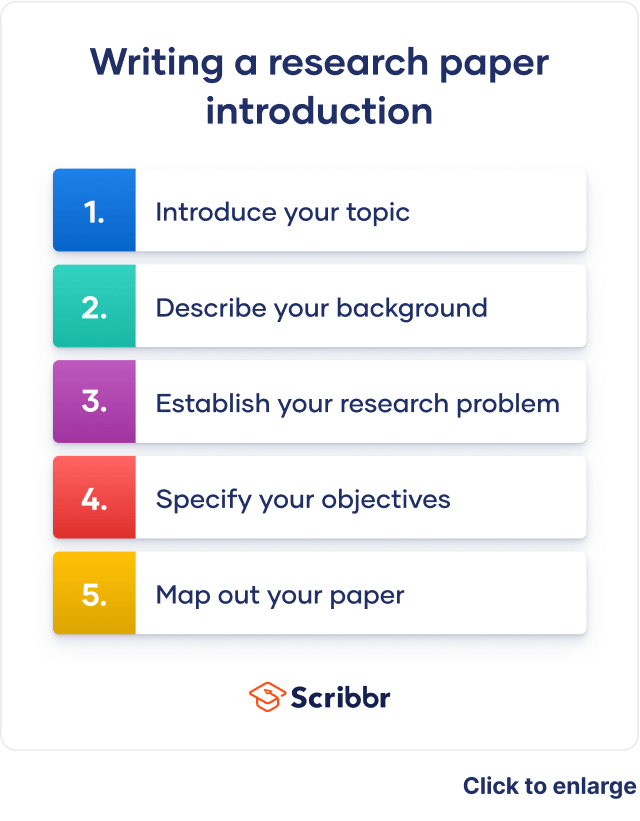
The introduction to a research paper is where you set up your topic and approach for the reader. It has several key goals:
- Present your topic and get the reader interested
- Provide background or summarize existing research
- Position your own approach
- Detail your specific research problem and problem statement
- Give an overview of the paper’s structure
The introduction looks slightly different depending on whether your paper presents the results of original empirical research or constructs an argument by engaging with a variety of sources.
The five steps in this article will help you put together an effective introduction for either type of research paper.
Instantly correct all language mistakes in your text
Upload your document to correct all your mistakes in minutes

Table of contents
Step 1: introduce your topic, step 2: describe the background, step 3: establish your research problem, step 4: specify your objective(s), step 5: map out your paper, research paper introduction examples, frequently asked questions about the research paper introduction.
The first job of the introduction is to tell the reader what your topic is and why it’s interesting or important. This is generally accomplished with a strong opening hook.
The hook is a striking opening sentence that clearly conveys the relevance of your topic. Think of an interesting fact or statistic, a strong statement, a question, or a brief anecdote that will get the reader wondering about your topic.
For example, the following could be an effective hook for an argumentative paper about the environmental impact of cattle farming:
A more empirical paper investigating the relationship of Instagram use with body image issues in adolescent girls might use the following hook:
Don’t feel that your hook necessarily has to be deeply impressive or creative. Clarity and relevance are still more important than catchiness. The key thing is to guide the reader into your topic and situate your ideas.
Receive feedback on language, structure, and formatting
Professional editors proofread and edit your paper by focusing on:
- Academic style
- Vague sentences
- Style consistency
See an example

This part of the introduction differs depending on what approach your paper is taking.
In a more argumentative paper, you’ll explore some general background here. In a more empirical paper, this is the place to review previous research and establish how yours fits in.
Argumentative paper: Background information
After you’ve caught your reader’s attention, specify a bit more, providing context and narrowing down your topic.
Provide only the most relevant background information. The introduction isn’t the place to get too in-depth; if more background is essential to your paper, it can appear in the body .
Empirical paper: Describing previous research
For a paper describing original research, you’ll instead provide an overview of the most relevant research that has already been conducted. This is a sort of miniature literature review —a sketch of the current state of research into your topic, boiled down to a few sentences.
This should be informed by genuine engagement with the literature. Your search can be less extensive than in a full literature review, but a clear sense of the relevant research is crucial to inform your own work.
Begin by establishing the kinds of research that have been done, and end with limitations or gaps in the research that you intend to respond to.
The next step is to clarify how your own research fits in and what problem it addresses.
Argumentative paper: Emphasize importance
In an argumentative research paper, you can simply state the problem you intend to discuss, and what is original or important about your argument.
Empirical paper: Relate to the literature
In an empirical research paper, try to lead into the problem on the basis of your discussion of the literature. Think in terms of these questions:
- What research gap is your work intended to fill?
- What limitations in previous work does it address?
- What contribution to knowledge does it make?
You can make the connection between your problem and the existing research using phrases like the following.
| Although has been studied in detail, insufficient attention has been paid to . | You will address a previously overlooked aspect of your topic. |
| The implications of study deserve to be explored further. | You will build on something suggested by a previous study, exploring it in greater depth. |
| It is generally assumed that . However, this paper suggests that … | You will depart from the consensus on your topic, establishing a new position. |
Now you’ll get into the specifics of what you intend to find out or express in your research paper.
The way you frame your research objectives varies. An argumentative paper presents a thesis statement, while an empirical paper generally poses a research question (sometimes with a hypothesis as to the answer).
Argumentative paper: Thesis statement
The thesis statement expresses the position that the rest of the paper will present evidence and arguments for. It can be presented in one or two sentences, and should state your position clearly and directly, without providing specific arguments for it at this point.
Empirical paper: Research question and hypothesis
The research question is the question you want to answer in an empirical research paper.
Present your research question clearly and directly, with a minimum of discussion at this point. The rest of the paper will be taken up with discussing and investigating this question; here you just need to express it.
A research question can be framed either directly or indirectly.
- This study set out to answer the following question: What effects does daily use of Instagram have on the prevalence of body image issues among adolescent girls?
- We investigated the effects of daily Instagram use on the prevalence of body image issues among adolescent girls.
If your research involved testing hypotheses , these should be stated along with your research question. They are usually presented in the past tense, since the hypothesis will already have been tested by the time you are writing up your paper.
For example, the following hypothesis might respond to the research question above:
Scribbr Citation Checker New
The AI-powered Citation Checker helps you avoid common mistakes such as:
- Missing commas and periods
- Incorrect usage of “et al.”
- Ampersands (&) in narrative citations
- Missing reference entries

The final part of the introduction is often dedicated to a brief overview of the rest of the paper.
In a paper structured using the standard scientific “introduction, methods, results, discussion” format, this isn’t always necessary. But if your paper is structured in a less predictable way, it’s important to describe the shape of it for the reader.
If included, the overview should be concise, direct, and written in the present tense.
- This paper will first discuss several examples of survey-based research into adolescent social media use, then will go on to …
- This paper first discusses several examples of survey-based research into adolescent social media use, then goes on to …
Scribbr’s paraphrasing tool can help you rephrase sentences to give a clear overview of your arguments.
Full examples of research paper introductions are shown in the tabs below: one for an argumentative paper, the other for an empirical paper.
- Argumentative paper
- Empirical paper
Are cows responsible for climate change? A recent study (RIVM, 2019) shows that cattle farmers account for two thirds of agricultural nitrogen emissions in the Netherlands. These emissions result from nitrogen in manure, which can degrade into ammonia and enter the atmosphere. The study’s calculations show that agriculture is the main source of nitrogen pollution, accounting for 46% of the country’s total emissions. By comparison, road traffic and households are responsible for 6.1% each, the industrial sector for 1%. While efforts are being made to mitigate these emissions, policymakers are reluctant to reckon with the scale of the problem. The approach presented here is a radical one, but commensurate with the issue. This paper argues that the Dutch government must stimulate and subsidize livestock farmers, especially cattle farmers, to transition to sustainable vegetable farming. It first establishes the inadequacy of current mitigation measures, then discusses the various advantages of the results proposed, and finally addresses potential objections to the plan on economic grounds.
The rise of social media has been accompanied by a sharp increase in the prevalence of body image issues among women and girls. This correlation has received significant academic attention: Various empirical studies have been conducted into Facebook usage among adolescent girls (Tiggermann & Slater, 2013; Meier & Gray, 2014). These studies have consistently found that the visual and interactive aspects of the platform have the greatest influence on body image issues. Despite this, highly visual social media (HVSM) such as Instagram have yet to be robustly researched. This paper sets out to address this research gap. We investigated the effects of daily Instagram use on the prevalence of body image issues among adolescent girls. It was hypothesized that daily Instagram use would be associated with an increase in body image concerns and a decrease in self-esteem ratings.
The introduction of a research paper includes several key elements:
- A hook to catch the reader’s interest
- Relevant background on the topic
- Details of your research problem
and your problem statement
- A thesis statement or research question
- Sometimes an overview of the paper
Don’t feel that you have to write the introduction first. The introduction is often one of the last parts of the research paper you’ll write, along with the conclusion.
This is because it can be easier to introduce your paper once you’ve already written the body ; you may not have the clearest idea of your arguments until you’ve written them, and things can change during the writing process .
The way you present your research problem in your introduction varies depending on the nature of your research paper . A research paper that presents a sustained argument will usually encapsulate this argument in a thesis statement .
A research paper designed to present the results of empirical research tends to present a research question that it seeks to answer. It may also include a hypothesis —a prediction that will be confirmed or disproved by your research.
Cite this Scribbr article
If you want to cite this source, you can copy and paste the citation or click the “Cite this Scribbr article” button to automatically add the citation to our free Citation Generator.
Caulfield, J. (2024, September 05). Writing a Research Paper Introduction | Step-by-Step Guide. Scribbr. Retrieved September 27, 2024, from https://www.scribbr.com/research-paper/research-paper-introduction/
Is this article helpful?

Jack Caulfield
Other students also liked, writing strong research questions | criteria & examples, writing a research paper conclusion | step-by-step guide, research paper format | apa, mla, & chicago templates, get unlimited documents corrected.
✔ Free APA citation check included ✔ Unlimited document corrections ✔ Specialized in correcting academic texts

IMAGES
VIDEO
COMMENTS
How to Write a Rationale for a Research Paper . The basis for writing a research rationale is preliminary data or a clear description of an observation. If you are doing basic/theoretical research, then a literature review will help you identify gaps in current knowledge. In applied/practical research, you base your rationale on an existing ...
The rationale for your research is the reason why you decided to conduct the study in the first place. The motivation for asking the question. The knowledge gap. This is often the most significant part of your publication. It justifies the study's purpose, novelty, and significance for science or society.
A rationale in Australian academic writing is rarely a whole task by itself. It is often a part of a bigger task. For example, a part of a lesson plan might be to provide a rationale for why you chose to teach particular content or use a certain resource or activity, or you may be asked to provide a rationale as to why you chose a particular ...
The rationale for research is also sometimes referred to as the justification for the study. When writing your rational, first begin by introducing and explaining what other researchers have published on within your research field. Having explained the work of previous literature and prior research, include discussion about where the gaps in ...
Research rationale helps to ideate new topics which are less addressed. Additionally, it offers fresh perspectives on existing research and discusses the shortcomings in previous studies. It shows that your study aims to contribute to filling these gaps and advancing the field's understanding. 3. Originality and Novelty.
3. Identify the ways your study will correct those shortcomings. Carefully explain the ways in which your study will answer the research question in a way that the previous studies failed to do so. Be persuasive to convince your readers that your study will contribute something both useful and necessary to the field.
A good rationale should include a summary of conclusions from your literature review, identify what is currently unknown, discuss inconclusive or contested results from previous studies, and emphasize the necessity to improve or build on previous research . Creating a rationale is a vital part of the research process, as it not only sets the ...
A well-written rationale naturally leads to your choice of methodology. By clearly stating the problem you're addressing and why it's important, you create a logical foundation for explaining how you plan to tackle it. This connection between your rationale and methodology strengthens the overall coherence of your research paper. 5.
To write your rationale, you should first write a background on what all research has been done on your study topic. Follow this with 'what is missing' or 'what are the open questions of the study'. Identify the gaps in the literature and emphasize why it is important to address those gaps. This will form the rationale of your study.
A research rationale provides an organized strategy for the whole research and acts as the cornerstone of the research project. It contributes to the research's rationale by stating why the study is significant, what its aims are, and what the expected findings are. In essence, it is a compelling argument for why the study should be carried ...
Rationale for the study, also referred to as justification for the study, is reason why you have conducted your study in the first place. This part in your paper needs to explain uniqueness and importance of your research. Rationale for the study needs to be specific and ideally, it should relate to the following points: 1. The research needs ...
Q: How do you write a rationale for research? The Merriam-Webster Dictionary defines "rationale" as "an explanation of controlling principles" or "the underlying reason for something." Thus, the rationale for your study should explain your reason for conducting the study. We have discussed this topic at some length in some of our existing posts.
19 November, 2021. The rationale for one's research is the justification for undertaking a given study. It states the reason (s) why a researcher chooses to focus on the topic in question, including what the significance is and what gaps the research intends to fill. In short, it is an explanation that rationalises the need for the study.
Answer: The rationale for research basically outlines why you wanted to conduct research on the topic of your choice. The rationale is the justification of the study, and specifies the need to conduct research on the topic. In science, in fact, it is easier to come up with a rationale for research. You should first do a thorough literature ...
A rationale is a set of reasons or an explanation for a course of action or beliefs. Sometimes it is referred to as a statement of intent. In a school context, it is most often required to explain your creative choices in response to a task. In English, the purpose of a rationale is to link your creative response to the text studied and the prompt.
Explaining rationale. Key points: Point of an introduction or specific aims is to motivate the rest of the document. State the research question. In a paper, make it correspond to the conclusion. In a proposal, make it encompass all the aims. Explain why you did/ will do the research. How it relates to an important problem.
In brief. The research's rationale describes why the study was undertaken (in a thesis or article) or why the study should be accompanied (in a proposal). This implies that the research justification should explain why the study is/was necessary to the reader or examiner. It is sometimes known as a study's "purpose" or "justification.".
Here are the steps to write the background of the study in a research paper: Identify the research problem: Start by identifying the research problem that your study aims to address. This can be a particular issue, a gap in the literature, or a need for further investigation. Conduct a literature review: Conduct a thorough literature review to ...
convincing rationale for a research study' Coaching: An International Journal of Theory, Research. and Practice 5.1 1-7. Abstract. Explaining the purpos e of a research study and providing a ...
Table of contents. Step 1: Introduce your topic. Step 2: Describe the background. Step 3: Establish your research problem. Step 4: Specify your objective (s) Step 5: Map out your paper. Research paper introduction examples. Frequently asked questions about the research paper introduction.
Answer: The rationale of your research is the reason for conducting the study or the justification for your study. Usually, the rationale is a part of the introduction section. In the introduction, you should first give a background on what research has do far been done on your topic. Begin with general information about your research area and ...
Answer: The rationale of your research offers the reason for addressing a particular problem with a spscific solution. Your research proposal needs to explain the reasons why you are conducting the study: this forms the rationale for your research, also referred to as the justification of the study. The rationale should explain what you hope to ...
Jan 06, 2023. The rationale of your research is an important part of your publication. In your rationale, you state the need and reason to conduct your research. The rationale of your research brings forth the significance and novelty of your research. In this infographic, we have listed how you may write the rationale of your research: